Pebble Beach Concours d'Elegance, 2016 B Cars
Pebble Beach Concours d'Elegance, 2016 B Cars Photos and Stories.
Concours d'Elegance, Car Show, 2016-08-21, Pebble Beach Lodge, Pebble Beach, California, US
Best of Show
Concept Cars
Ford GT40
A Cars
B Cars
C-D Cars
F Cars
H-L Cars
M-O Cars
P-R Cars
S-V Cars
Prologue

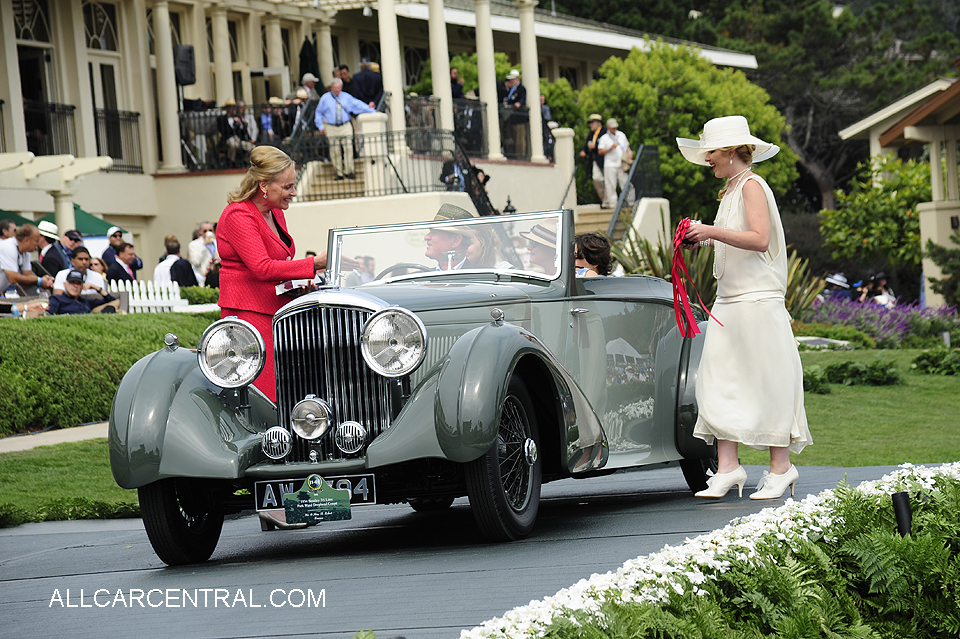
Bentley 3.5 Litre Park Ward
Drophead Coupe 1934
The Derby-built Bentley 3½ Litre was the first new Bentley to be built
following the company’s acquisition by Rolls-Royce in 1931. Based
on the experimental Rolls-Royce named “Peregrine,” the 3½ Litre
engine was developed from the same unit fitted to the Rolls-Royce
20/25 although it was slightly more powerful. The new model was
introduced to the public at Ascot race course in August 1933, and of
the 1,177 3½ Litre cars built, nearly half were bodied by the London
coachbuilder Park Ward. This unique Drophead Coupé was built for
Miss Florence Pickles, and was the start of a love affair with Derby
Bentleys that led to her ordering two more models, both with similar
Park Ward coachwork. All of Miss Pickles’ cars were originally painted
in British Racing Green with green leather upholstery.
Source: Pebble Beach Concours media release.

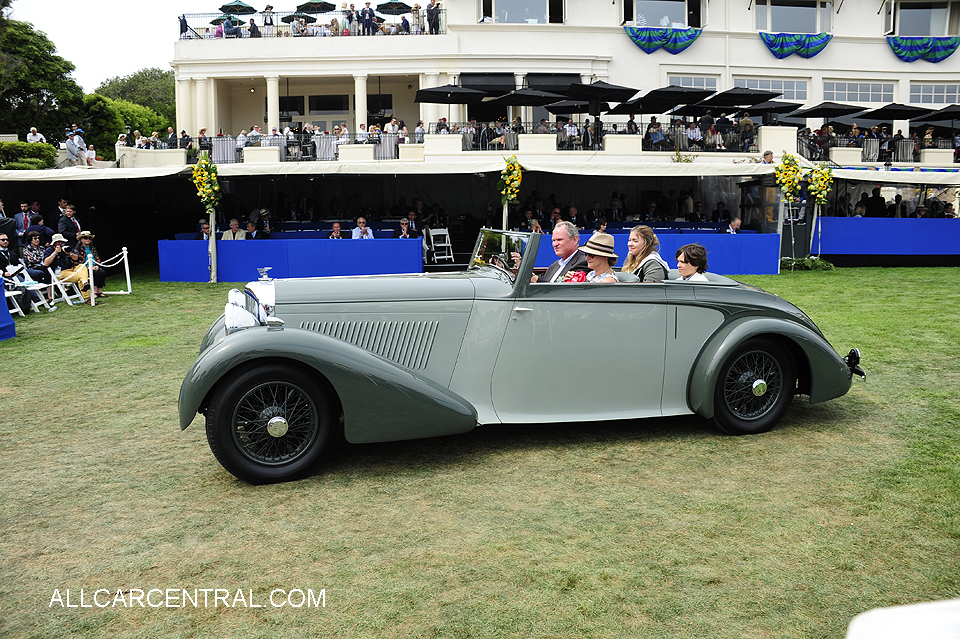
Bentley 3.5 Litre Park Ward Drophead Coupe 1934

Benz 50 HP
Tourer 1911
The Benz 50 HP was an incredibly expensive car in its day, costing
nearly $8,500 at a time when a new Ford Model T could be purchased
for under $700. This example has a 6.75-liter, 4-cylinder engine with
a toy tonneau–style body and was originally ordered by Charles
M. Hayes, a Chicago railroad man who went down with the Titanic
before the car was finished. Its subsequent owners included Don
Ricardo, the famous bandleader for the NBC Radio Orchestra in the
1930s.

Benz 50 HP Tourer 1911

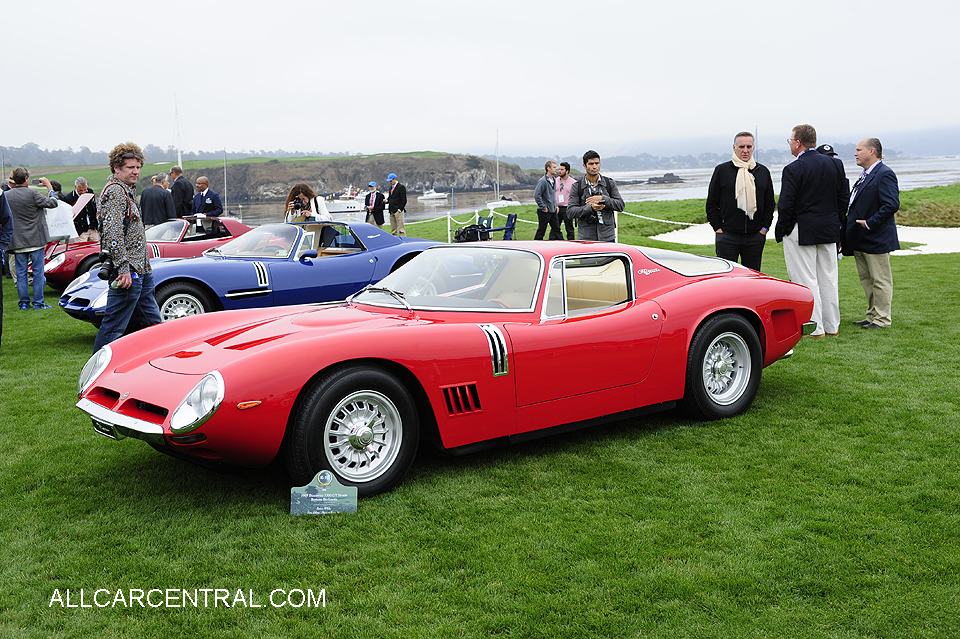
Bizzarrini
5300 GT Strada Bertone Berlinetta 1969
In the early 1960s, Giotto Bizzarrini and Renzo Rivolta developed
the road-going Iso Rivolta 4-passenger coupe, and they followed
that with the 2-seat Iso Grifo A3/L, launched in 1963. Bizzarrini later
developed his competition version, the A3/C, and after 22 A3/Cs had
been built, in 1965, Bizzarrini formed his own company in Livorno
and built his own version of the Iso Grifo A3/C, the Bizzarrini 5300 GT
Strada. Just 133 Stradas were built before Bizzarrini closed in 1969.
This car was built towards the end of Strada production. It has the
rare combination of 7-inch wheels at the front and 9-inch at the rear.
It was first delivered to an owner in Italy and came to America in the
1990s. Over the years it has won many awards.
Source: Pebble Beach Concours media release.

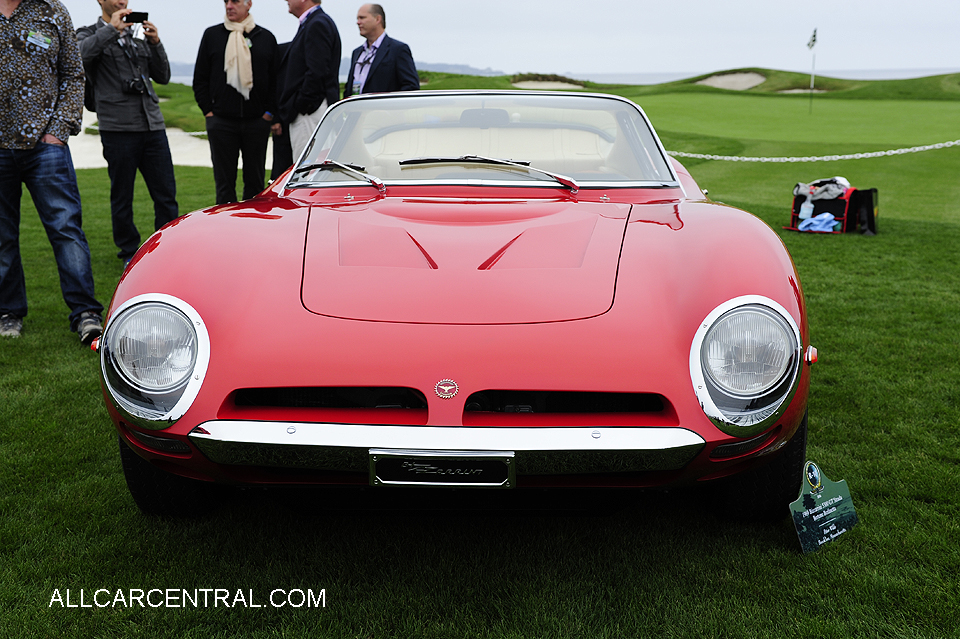
Bizzarrini 5300 GT Strada Bertone Berlinetta 1969

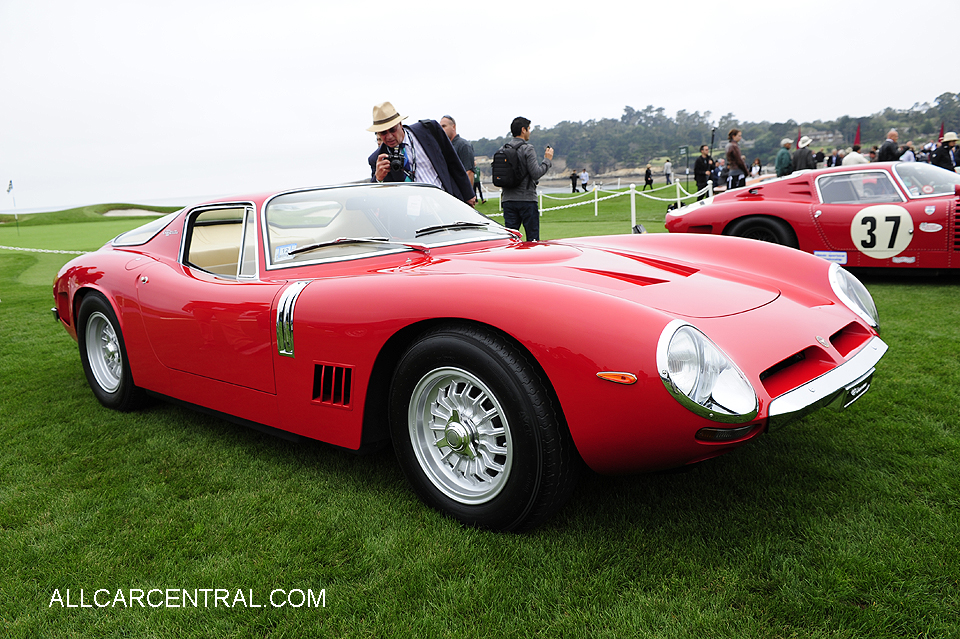
Bizzarrini 5300 GT Strada Bertone Berlinetta 1969

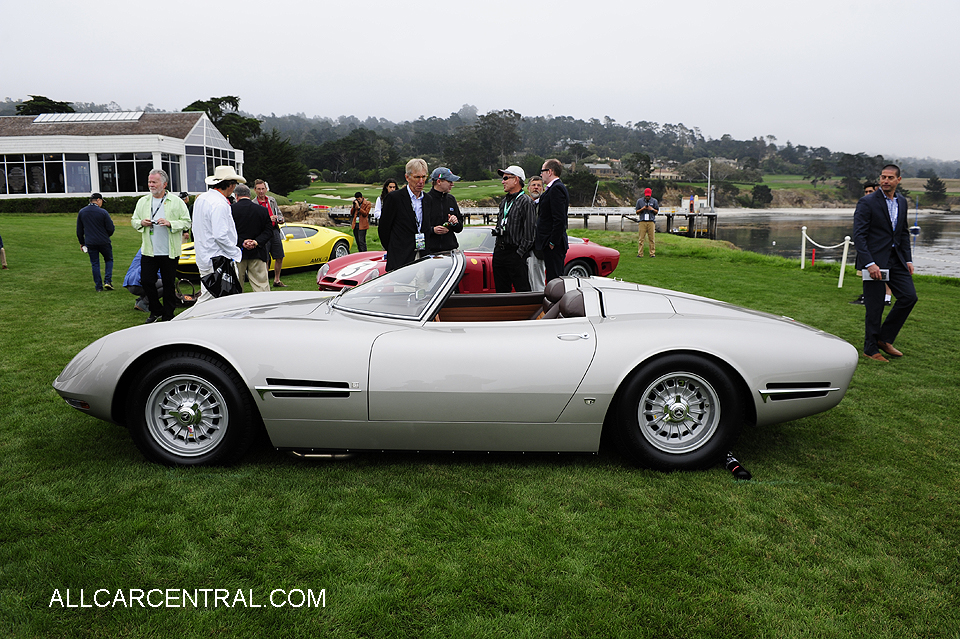
Bizzarrini 5300 Spyder Prototype Stile
Italia sn-IA3-0245 1966
This silver Spyder prototype (chassis IA3 0245), the first of just
three Bizzarrini 5300 Spyders, was built specifically to be displayed
at auto shows. It was the star of the 1966 Geneva Auto Show, and
was prominently featured on both sides of the Atlantic in Auto
Italiana and Road & Track magazines. All three Spyders share several
features, such as a roof that allows them to be either a full coupe,
a targa or a fully convertible roadster. The interior features bucket
seats moulded into the body and a retractable wind deflector similar
to sports cars today. The front of this car differs from the other two
production Spyders with its retractable covered headlights and
chromed front grill. After Bizzarrini closed in 1969, the car was kept
by one of Giotto Bizzarrini’s friends until the current owner acquired
it in 1999.
Source: Pebble Beach Concours media release.

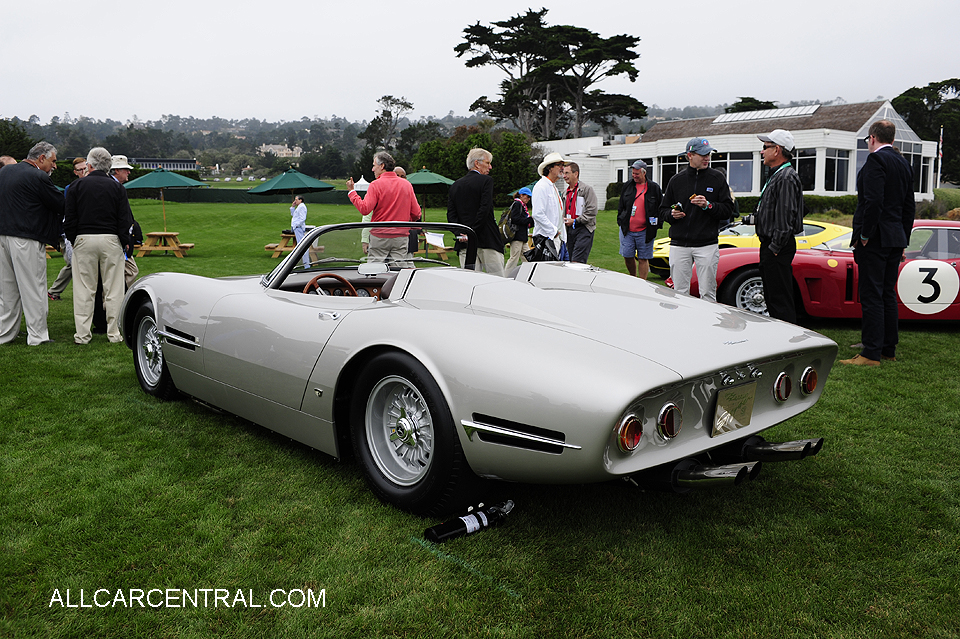
Bizzarrini 5300 Spyder Prototype Stile Italia sn-IA3-0245 1966

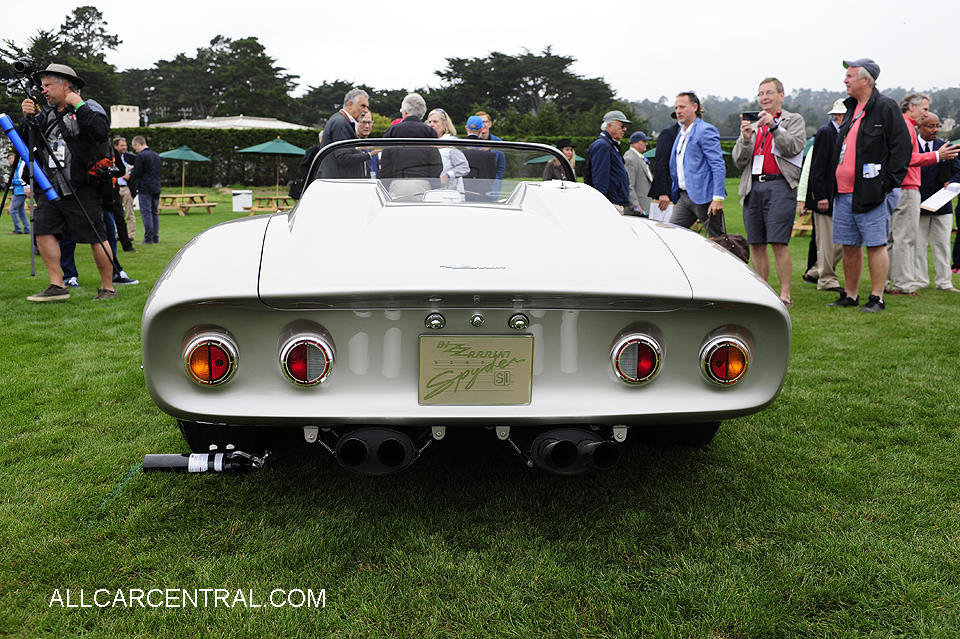
Bizzarrini 5300 Spyder Prototype Stile Italia sn-IA3-0245 1966

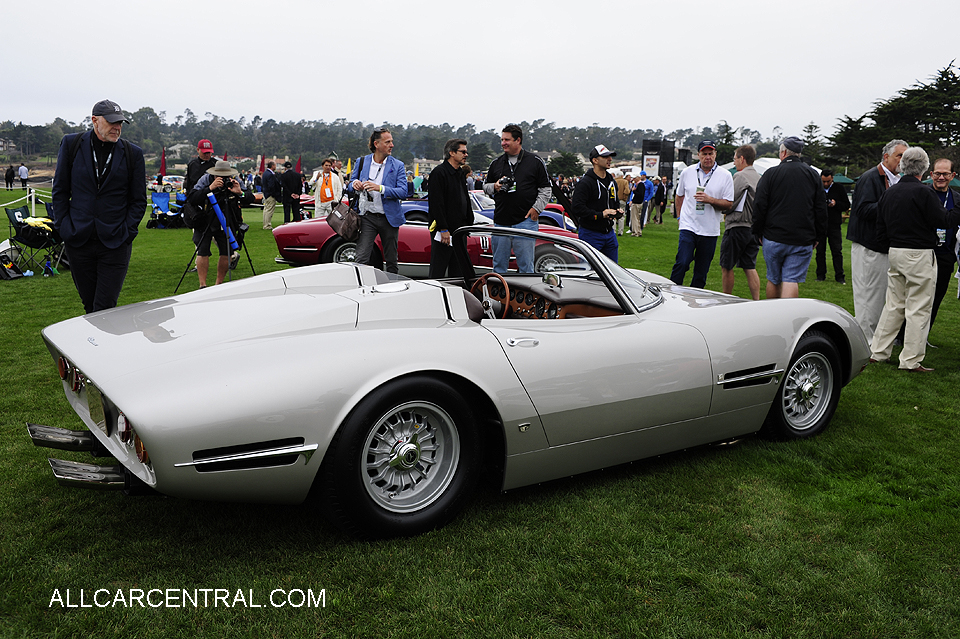
Bizzarrini 5300 Spyder Prototype Stile Italia sn-IA3-0245 1966

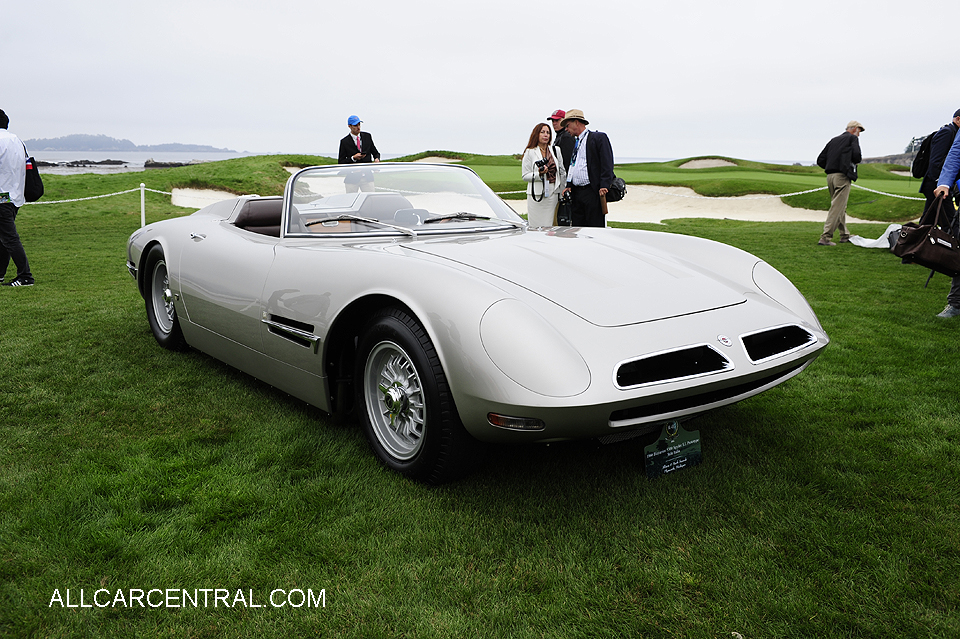
Bizzarrini 5300 Spyder Prototype Stile Italia sn-IA3-0245 1966

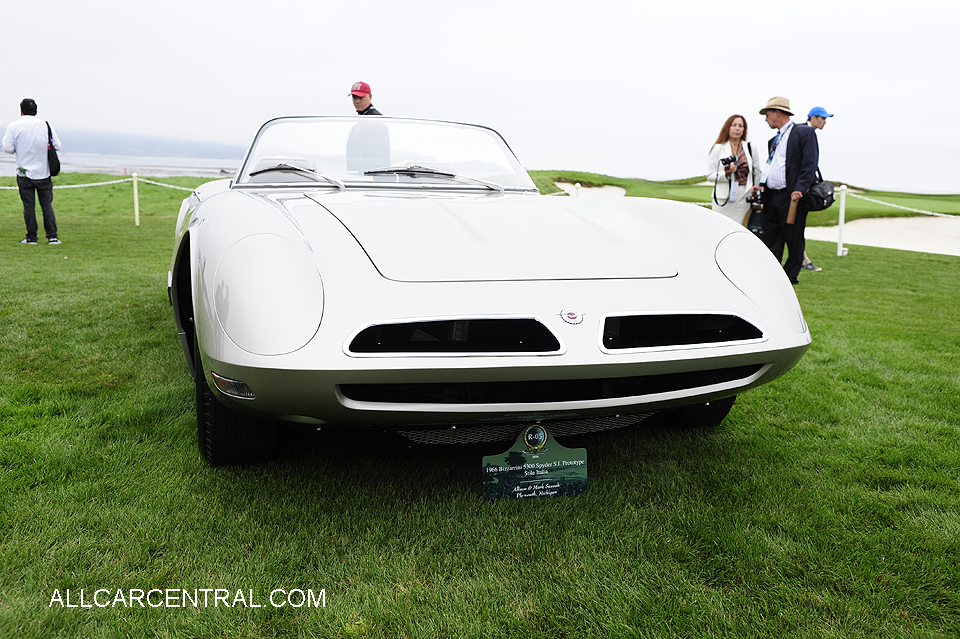
Bizzarrini 5300 Spyder Prototype Stile Italia sn-IA3-0245 1966

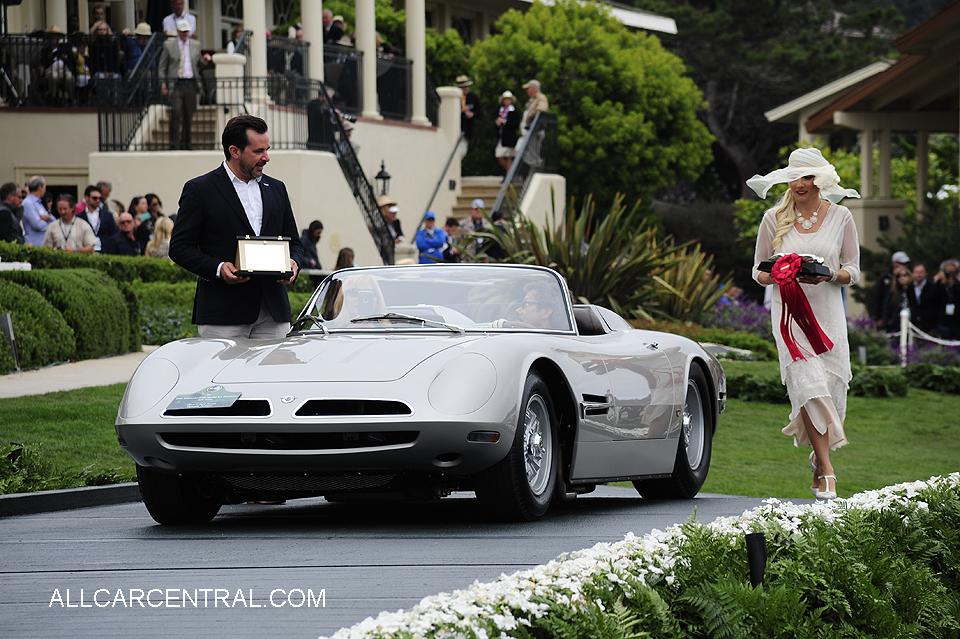
Bizzarrini 5300 Spyder Prototype Stile Italia sn- IA3-0245 1966

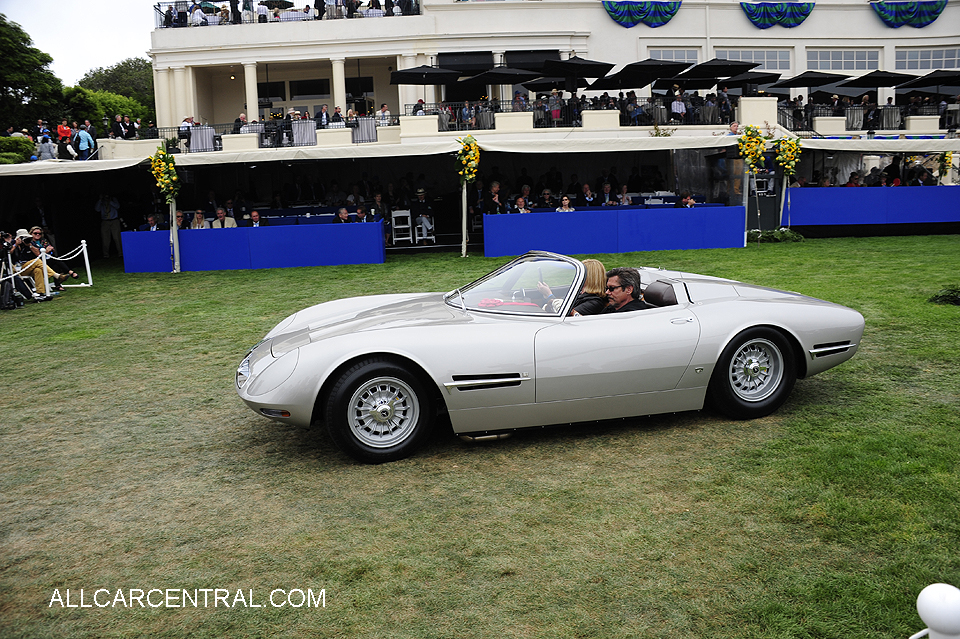
Bizzarrini 5300 Spyder Prototype Stile Italia sn- IA3-0245 1966

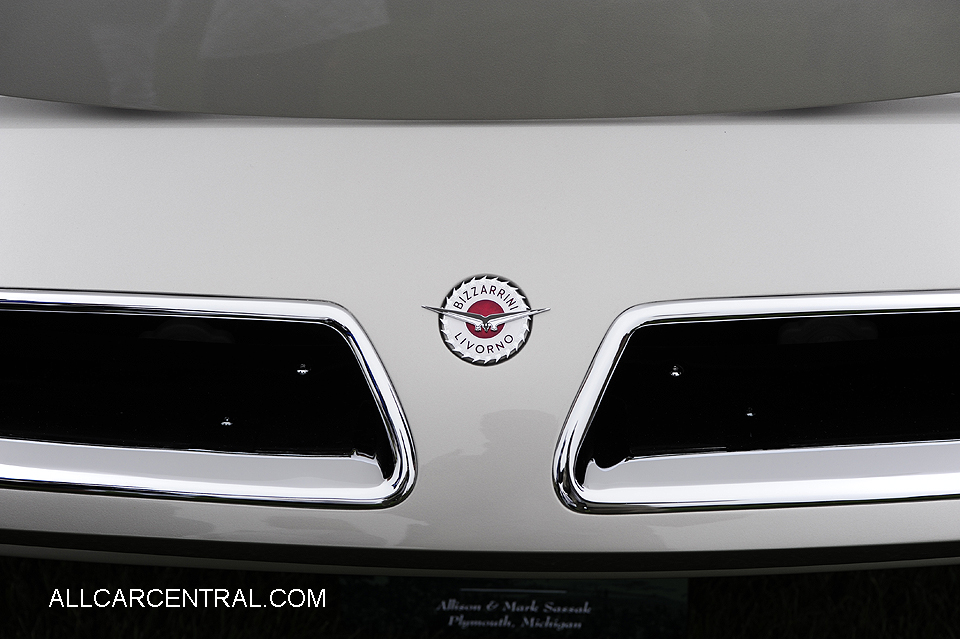
Bizzarrini 5300 Spyder Prototype Stile Italia sn-IA3-0245 1966

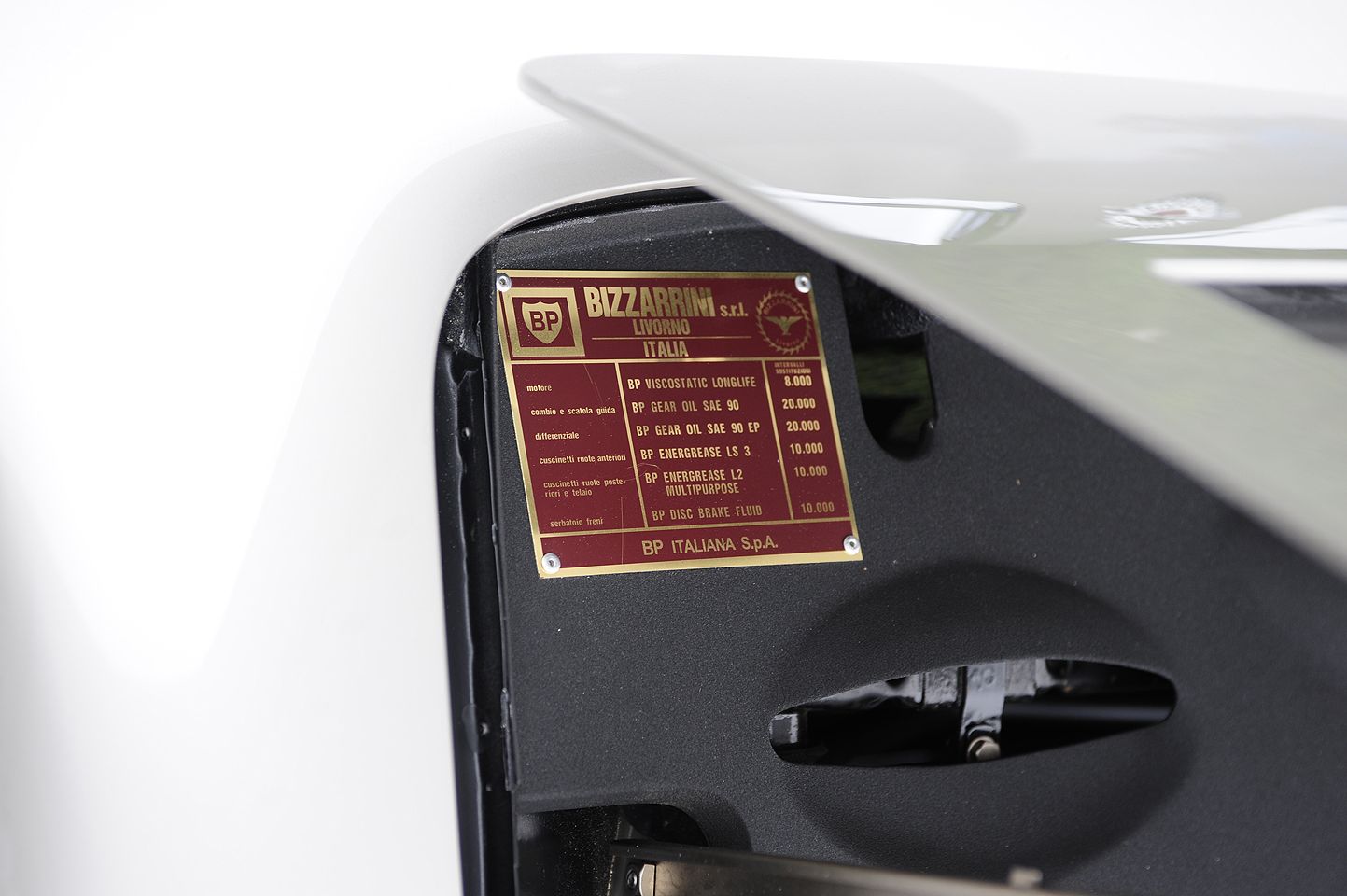
Bizzarrini 5300 Spyder Prototype Stile Italia sn-IA3-0245 1966

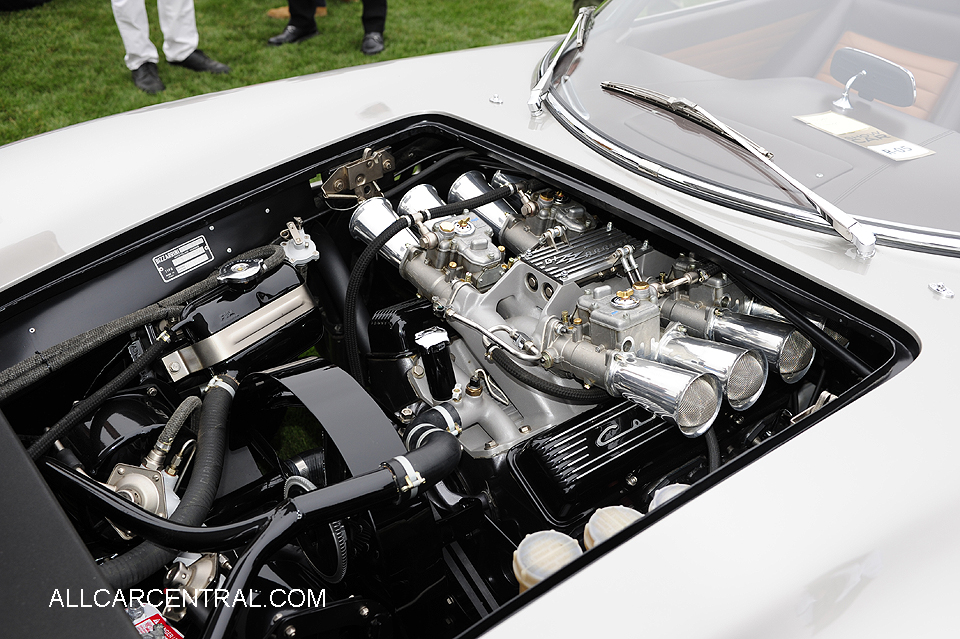
Bizzarrini 5300 Spyder Prototype Stile Italia sn-IA3-0245 1966

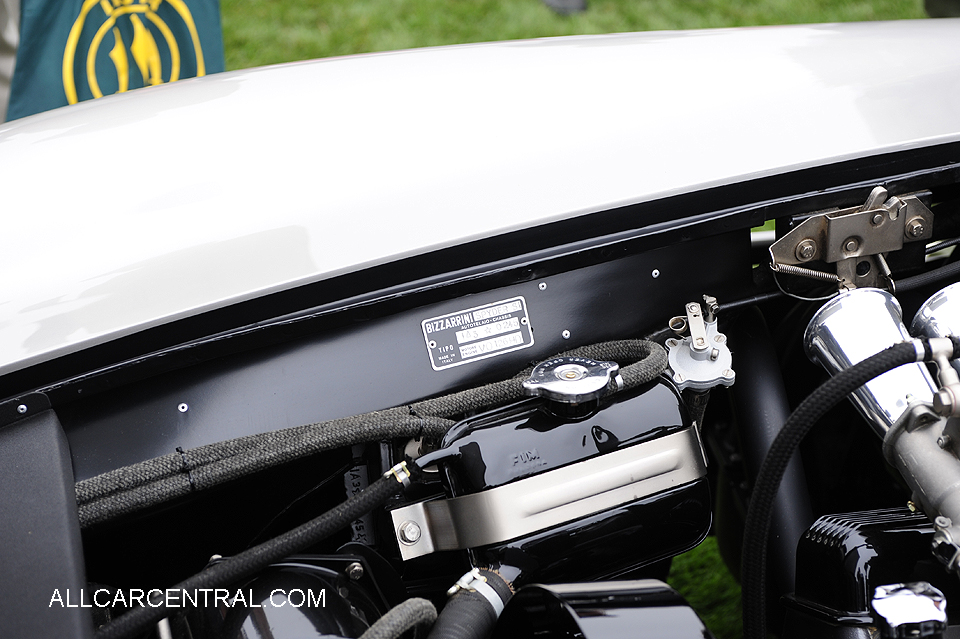
Bizzarrini 5300 Spyder Prototype Stile Italia sn-IA3-0245 1966

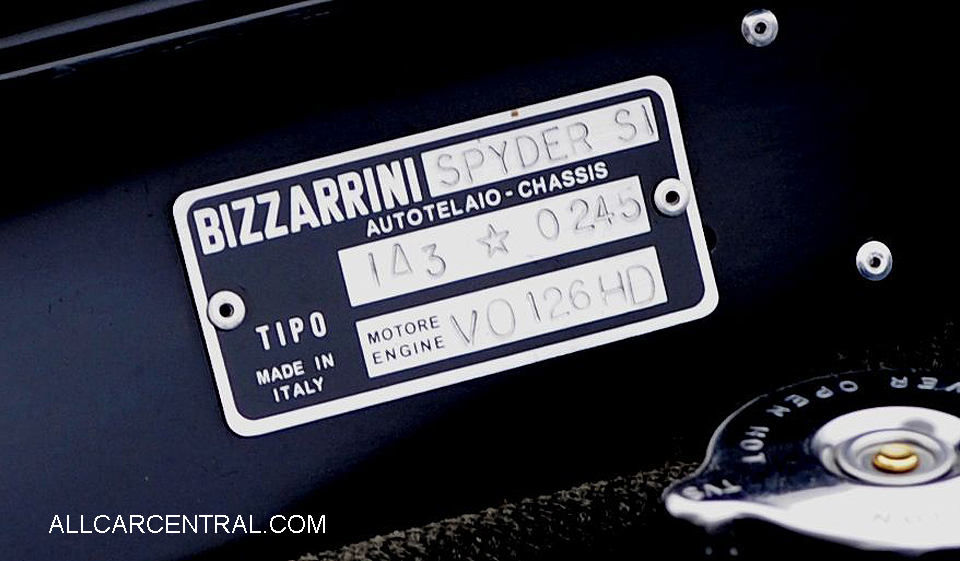
Bizzarrini 5300 Spyder Prototype Stile Italia sn-IA3-0245 1966

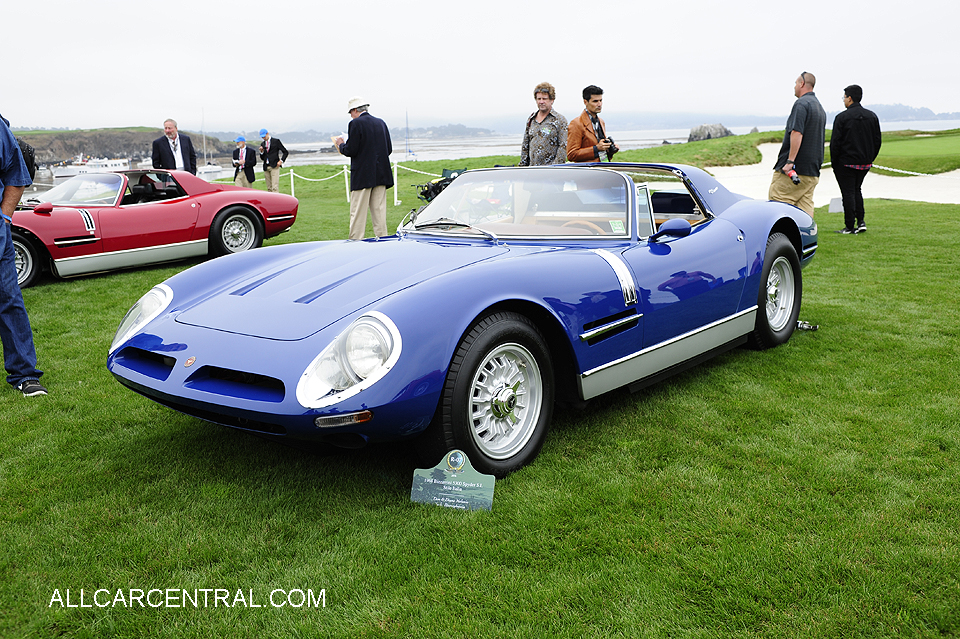
Bizzarrini 5300 Spyder Stile Italia sn-
IA3-0315S 1968
This Bizzarrini 5300 Spyder (chassis IA3-0315S) is the second of two
production spyders produced by Giotto Bizzarrini after his spyder
prototype debuted to great acclaim. Like the other race Bizzarrinis,
it has an alloy body built by Stile Italia but it also has a targa roof that
is permanently attached in true T-Top fashion, making the chassis
slightly stiffer. And the spyder has the same 327-cubic-inch, 350 bhp
V8 Corvette engine located well back behind the front crossmember,
making access to some of the engine components possible only
through a panel on the top of the dashboard. As with all Bizzarrini
5300s, these cars were amongst the most powerful on the road,
capable of over 160 mph. This car was first shown at the Turin Motor
Show in 1968. At one point, it was owned by Howard Turnley, the
Secretary of the Iso Bizzarrini Owner’s Club, and it is currently owned
by the President of the lso Bizzarrini Owner’s Club.
Source: Pebble Beach Concours media release.

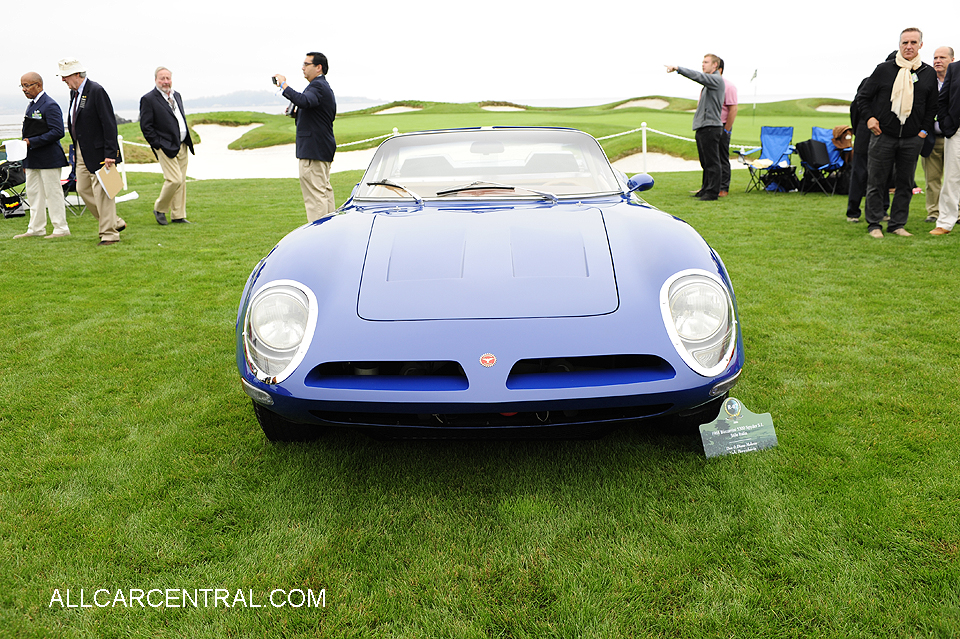
Bizzarrini 5300 Spyder Stile Italia sn- IA3-0315S 1968

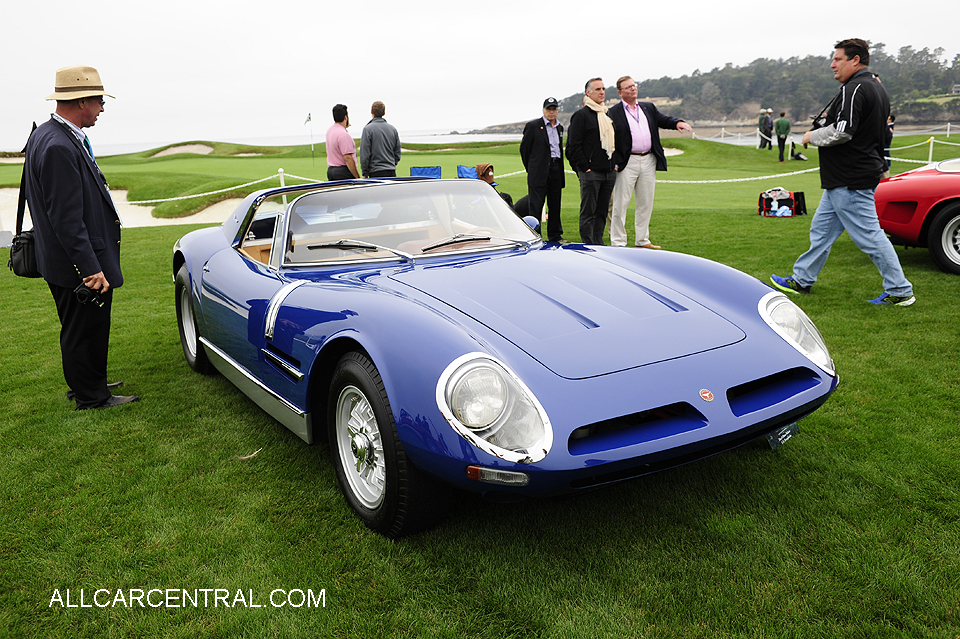
Bizzarrini 5300 Spyder Stile Italia sn- IA3-0315S 1968

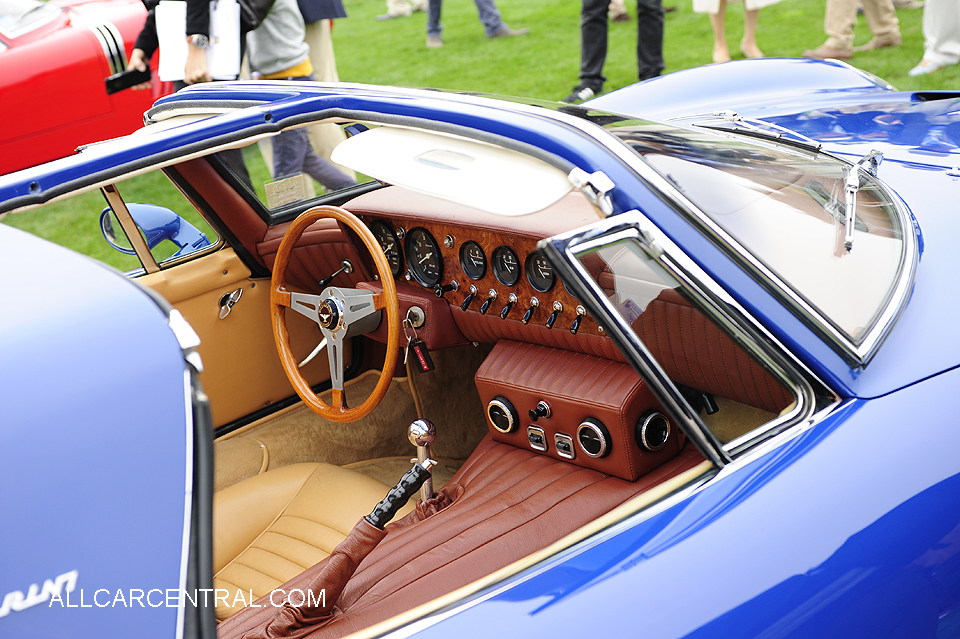
Bizzarrini 5300 Spyder Stile Italia sn- IA3-0315S 1968

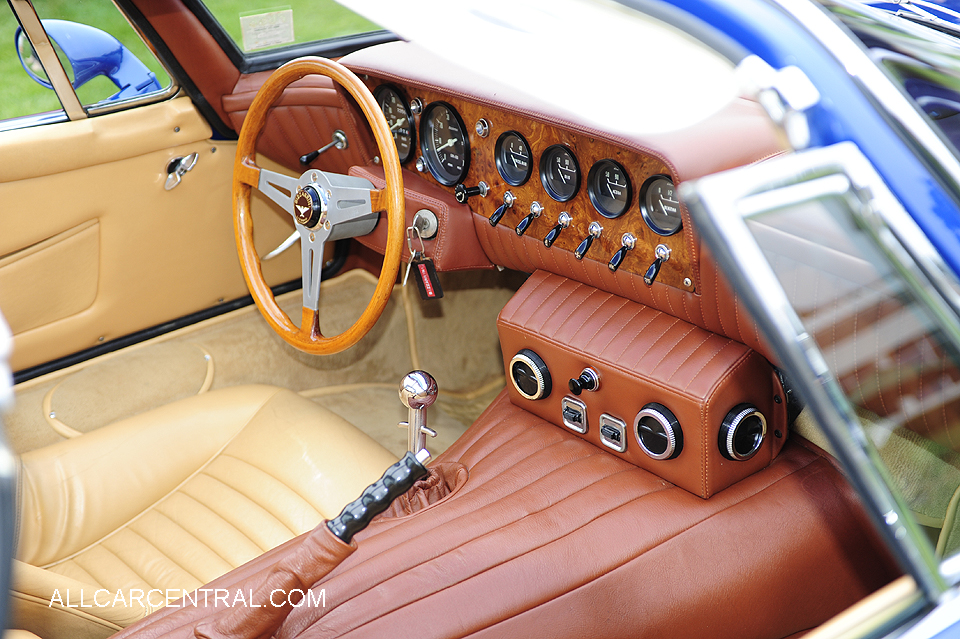
Bizzarrini 5300 Spyder Stile Italia sn- IA3-0315S 1968

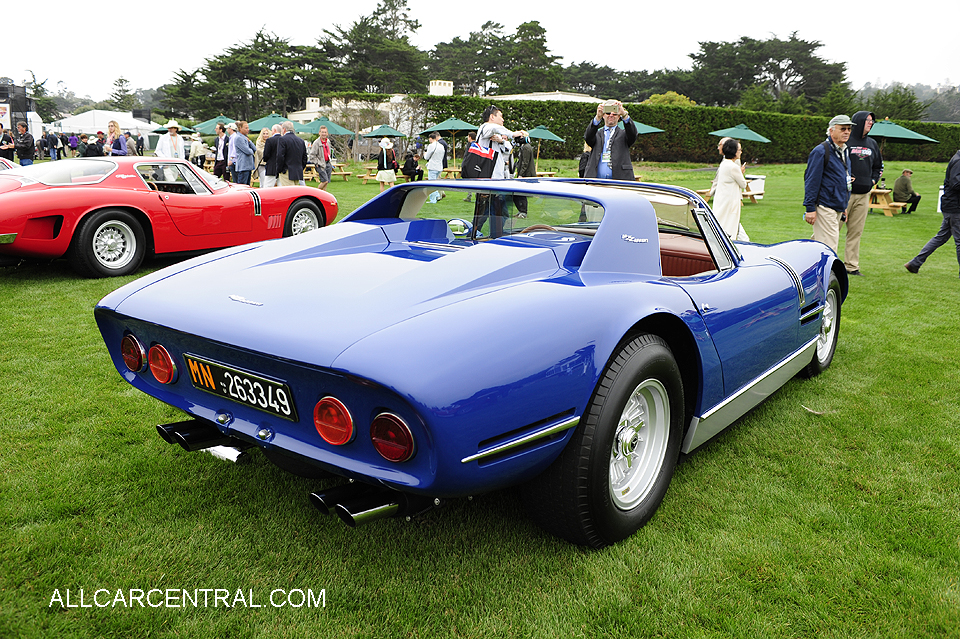
Bizzarrini 5300 Spyder Stile Italia sn- IA3-0315S 1968

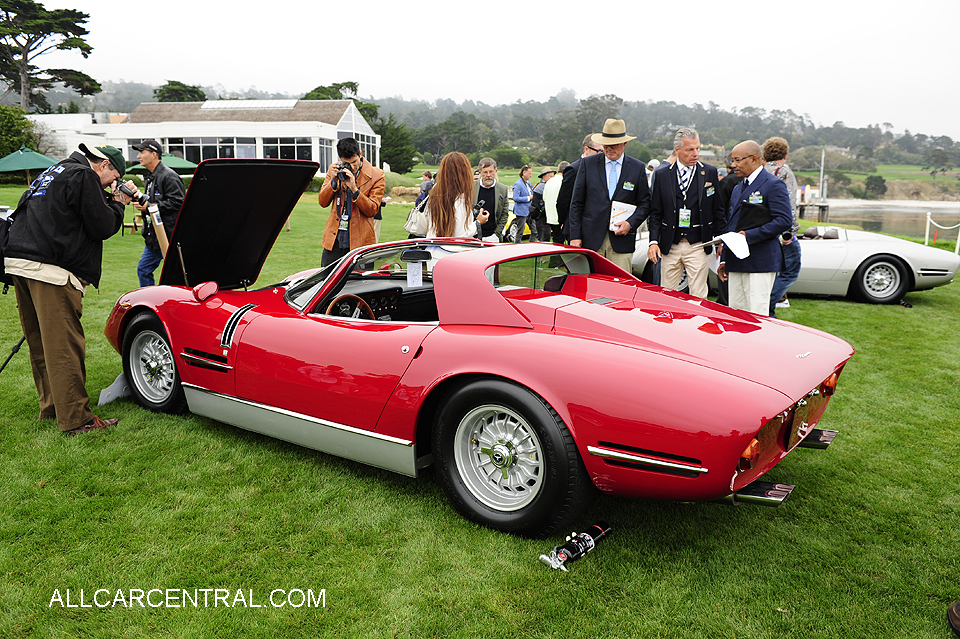
Bizzarrini
5300 Spyder Stile Italia sn-BA4-108
1968
One of just three Bizzarrini 5300 Spyders, this is the spyder built
for the American market following the debut of the prototype at
the 1966 Geneva Auto Show. All three alloy-bodied spyders were
developed and built by the ex-Bertone designer Virgilio D’lselio at
Carrozzeria Stile Italia in conjunction with the ex-Ghia designers
Pietro Sibona and Elio and Emilio Basano at Sibona & Basano. This
unique car was built on a new race-developed tubular chassis with
fully independent rear suspension. Coincidentally, the car was
shipped from Bizzarrini’s factory in Livorno to its first owner who
lived in Livonia, Michigan. A year after arriving in the United States
the car was bought by John Sassak, the current owner’s father—and
father and son have enjoyed the car ever since.
Source: Pebble Beach Concours media release.

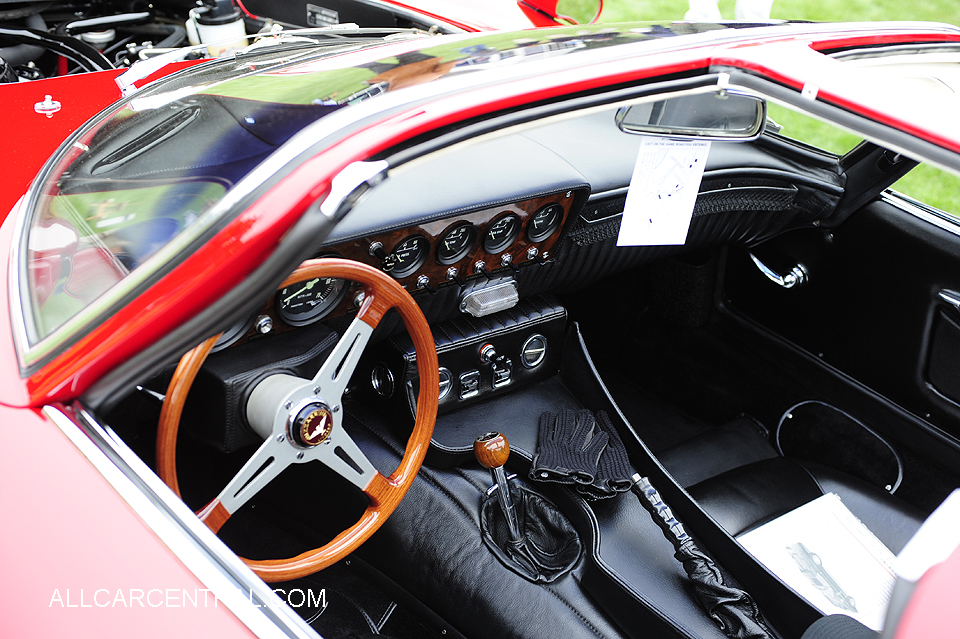
Bizzarrini 5300 Spyder Stile Italia sn-BA4-108 1968

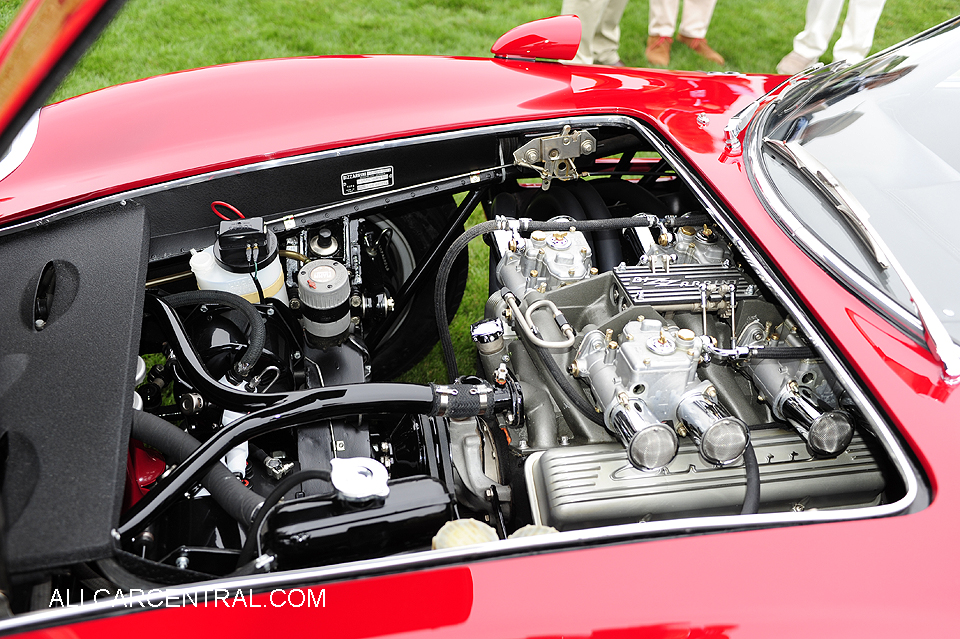
Bizzarrini 5300 Spyder Stile Italia sn-BA4-108 1968

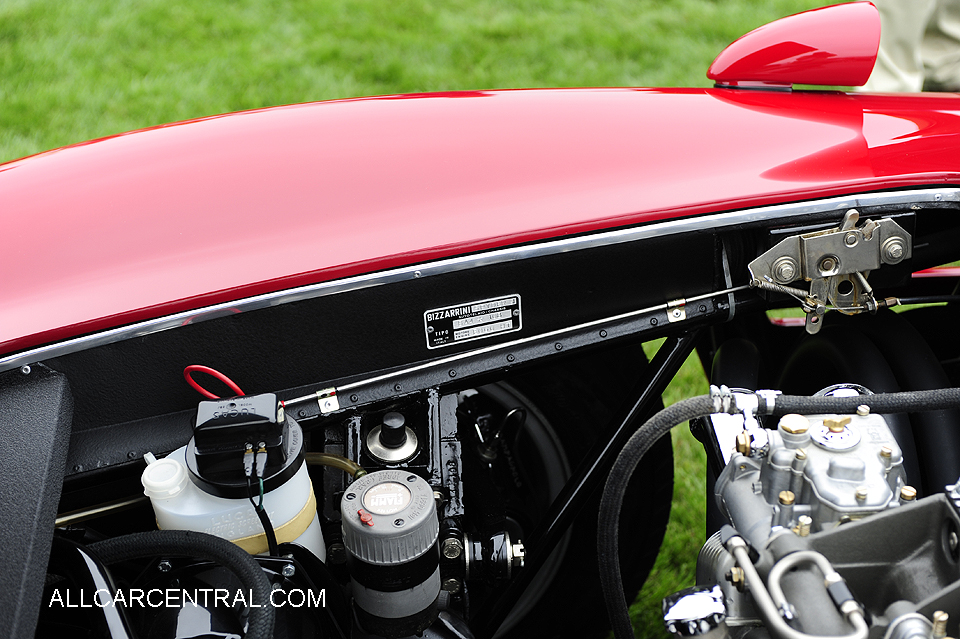
Bizzarrini 5300 Spyder Stile Italia sn-BA4-108 1968

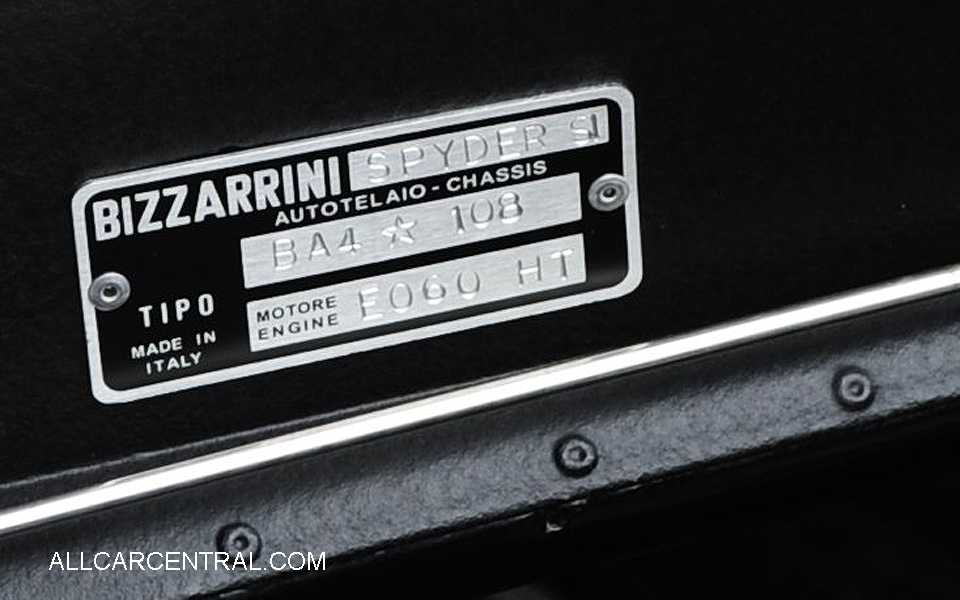
Bizzarrini 5300 Spyder Stile Italia sn-BA4-108 1968 R08 PB 2016

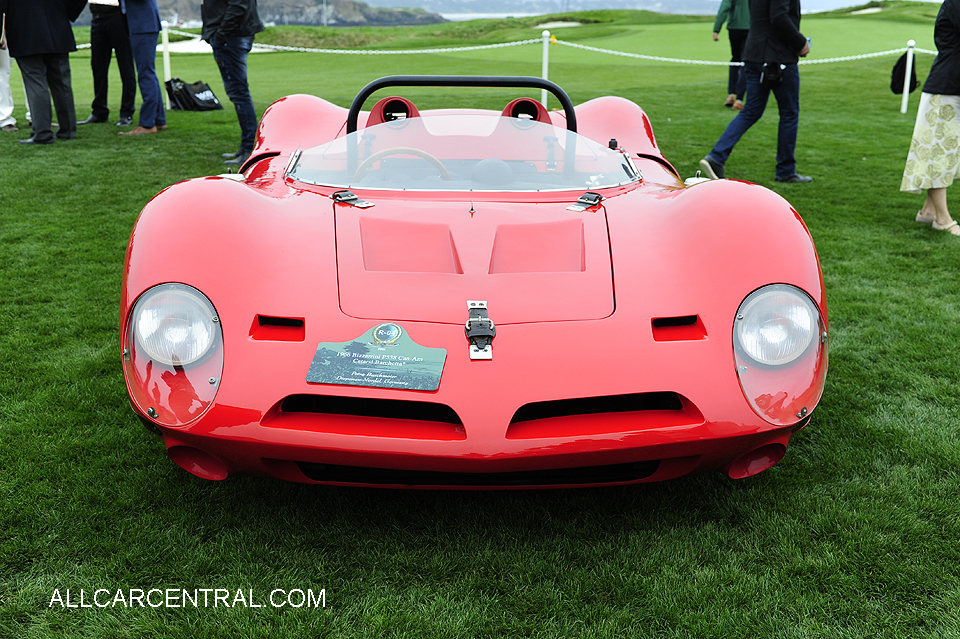
Bizzarrini P538 Can-Am Catarsi
Barchetta 1966
This Bizzarrini P538 was built for American racer Mike Gammino in
1966 to compete in the Can-Am series and at Le Mans. Two similar cars
were also constructed with Chevrolet V8s, but this car (chassis 002)
is powered by a Lamborghini 4-liter V12 engine with six twin-barrel
Weber carburetors producing 420 bhp and achieving a top speed of
over 170 mph. The body uses an aluminum space frame bonded to
fibreglass, making the car not only light but strong. The overall look
was described by one journalist as “a hunkered-down lizard,” and it
is almost exactly twice as wide as it is tall. FIA regulations dictated
that cars had to have a passenger seat and room for a suitcase so
Bizzarrini put the driver in the center with the passenger on his left
and luggage space on the right. Gammino drove this car just once
in the Can-Am race at Bridgehampton before he sold it at the end of
the season. Its current owner purchased it in 1990.
Source: Pebble Beach Concours media release.

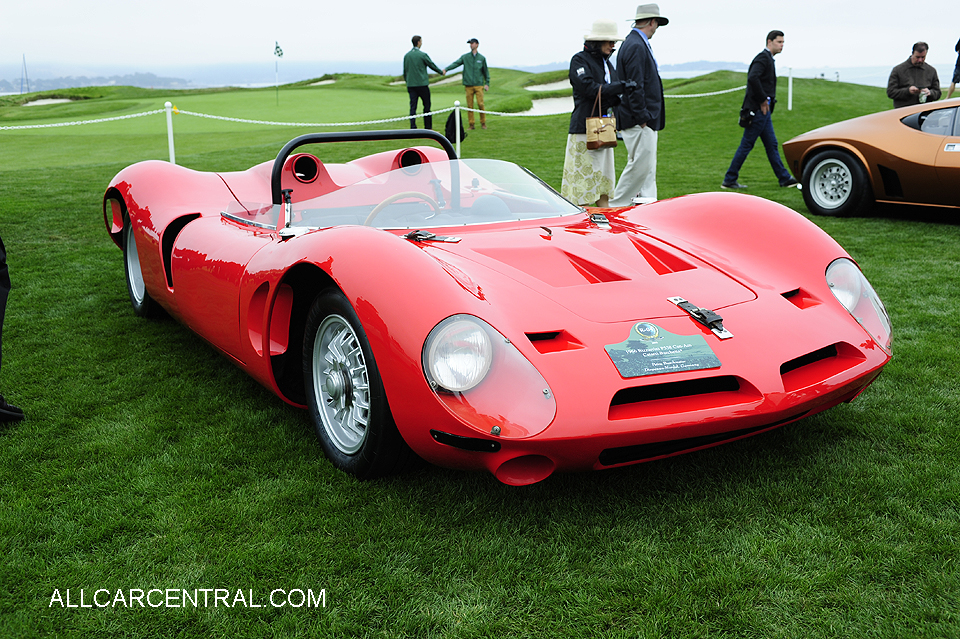
Bizzarrini P538 Can-Am Catarsi Barchetta 1966

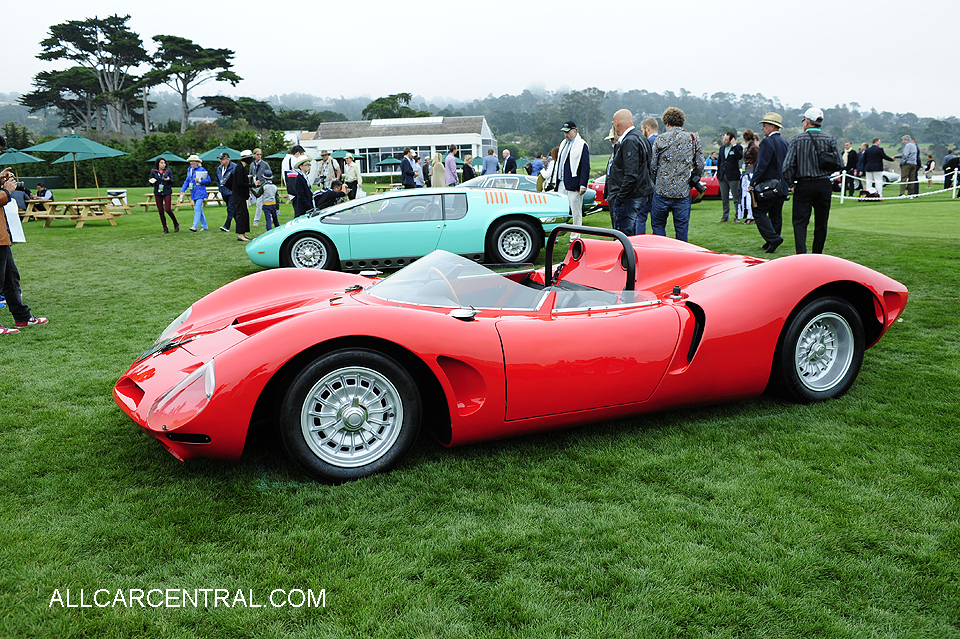
Bizzarrini P538 Can-Am Catarsi Barchetta 1966

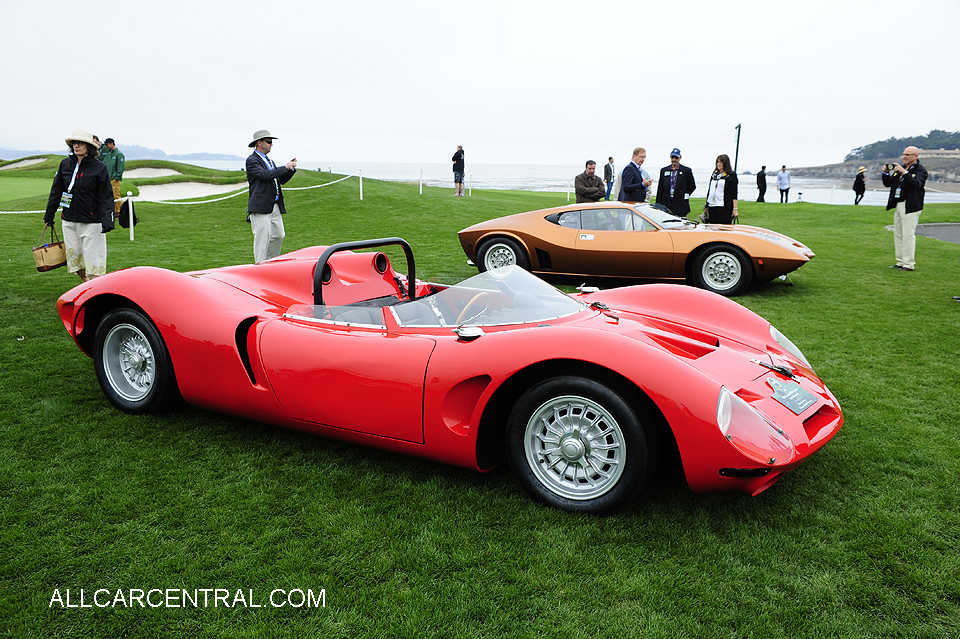
Bizzarrini P538 Can-Am Catarsi Barchetta 1966

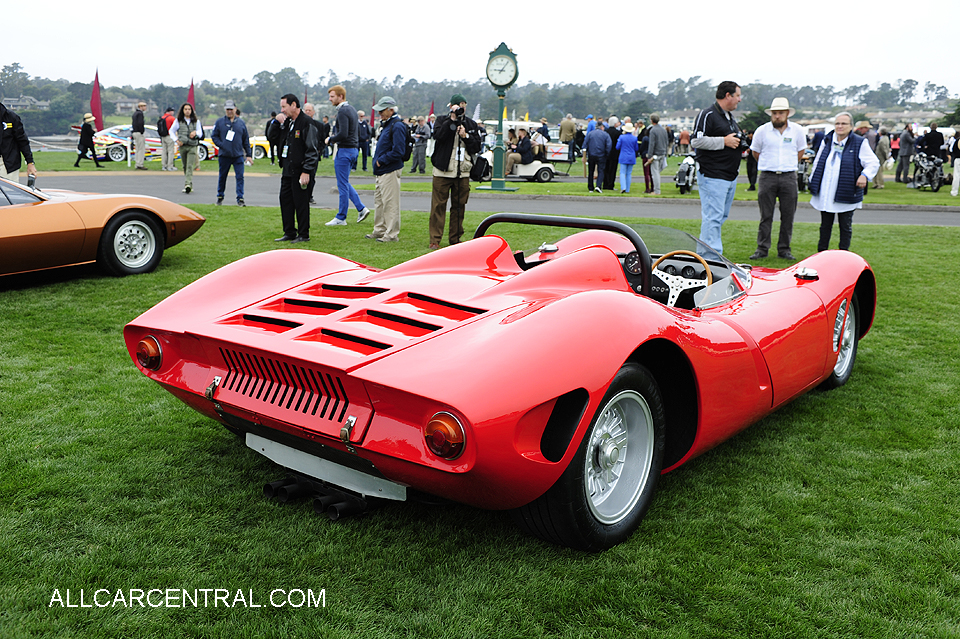
Bizzarrini P538 Can-Am Catarsi Barchetta 1966

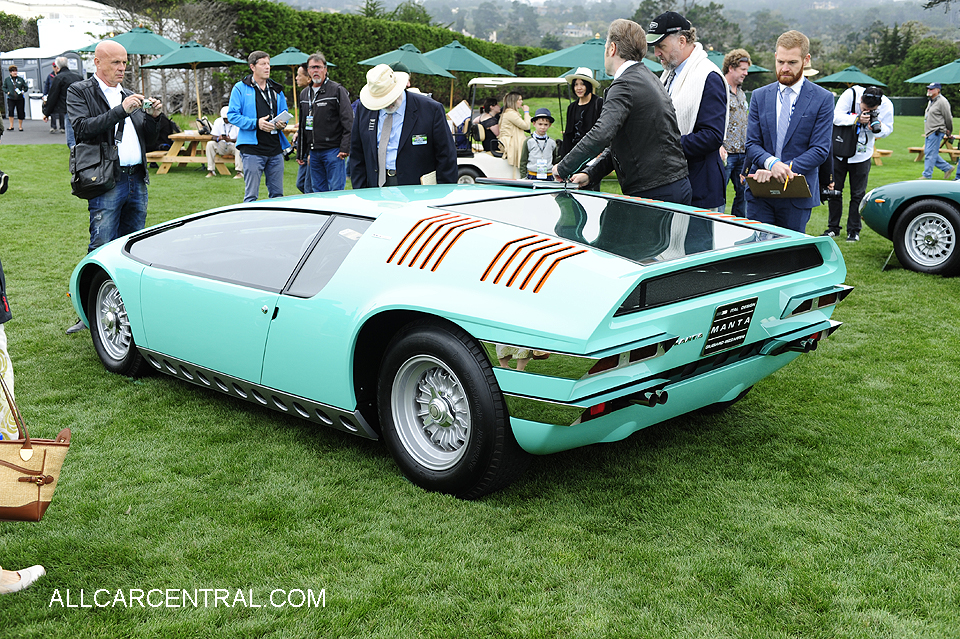
Bizzarrini
P538 Italdesign Manta Concept sn-3 1966
Designed by Giorgetto Giugiaro, this concept car was built on a
Bizzarrini P538 (chassis number 3). Giugiaro’s company, Italdesign,
was formed on February 13, 1968, and work began immediately
to transform this P538 into an ultra-modern sports car. After just
40 days, Giugiaro presented the prototype to the press at the Turin
Motor Show. Giugiaro named his creation after the manta ray, and it
soon appeared in many automotive publications, including the cover
of Road & Track’s March 1969 issue. The Manta’s roof is a constant
curve from bonnet to tail, including the windscreen, which has a
15-degree rake. To improve visibility a “Venetian blind” system was
designed below the windscreen, which can be opened manually for
town driving and closed to preserve aerodynamic integrity at speed.
Source: Pebble Beach Concours media release.

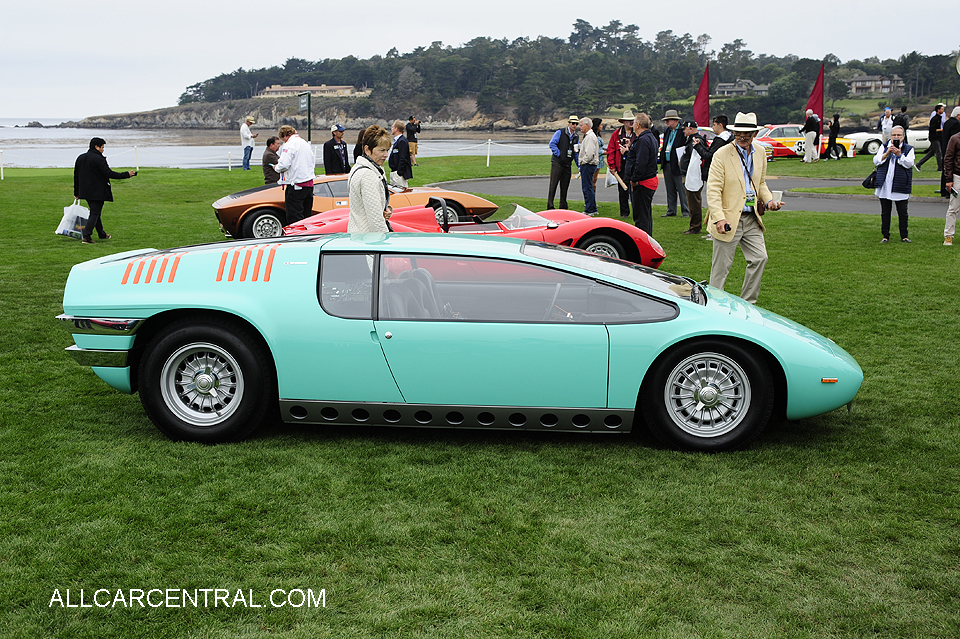
Bizzarrini P538 Italdesign Manta Concept sn-3 1966

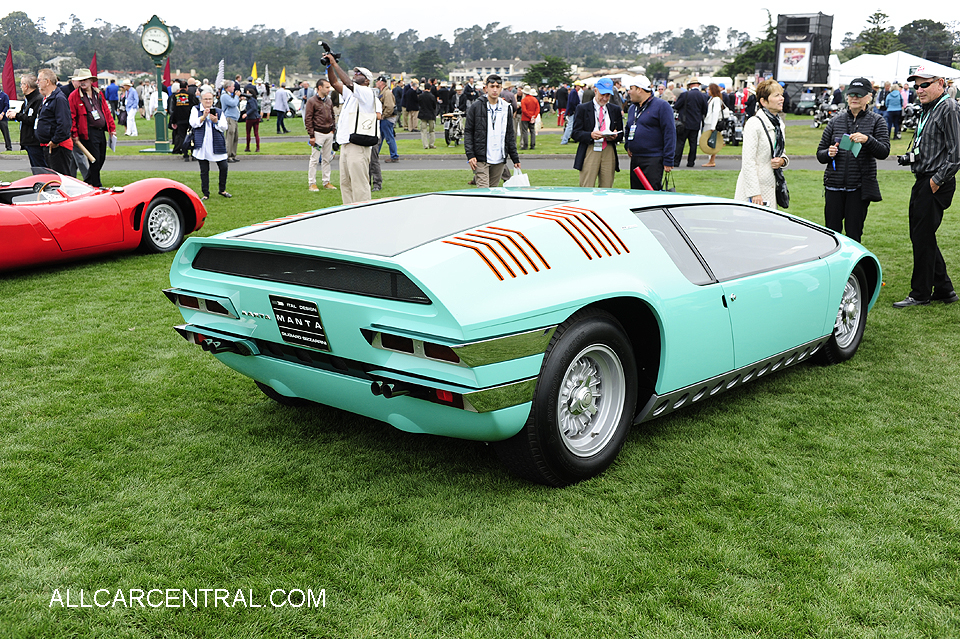
Bizzarrini P538 Italdesign Manta Concept sn-3 1966

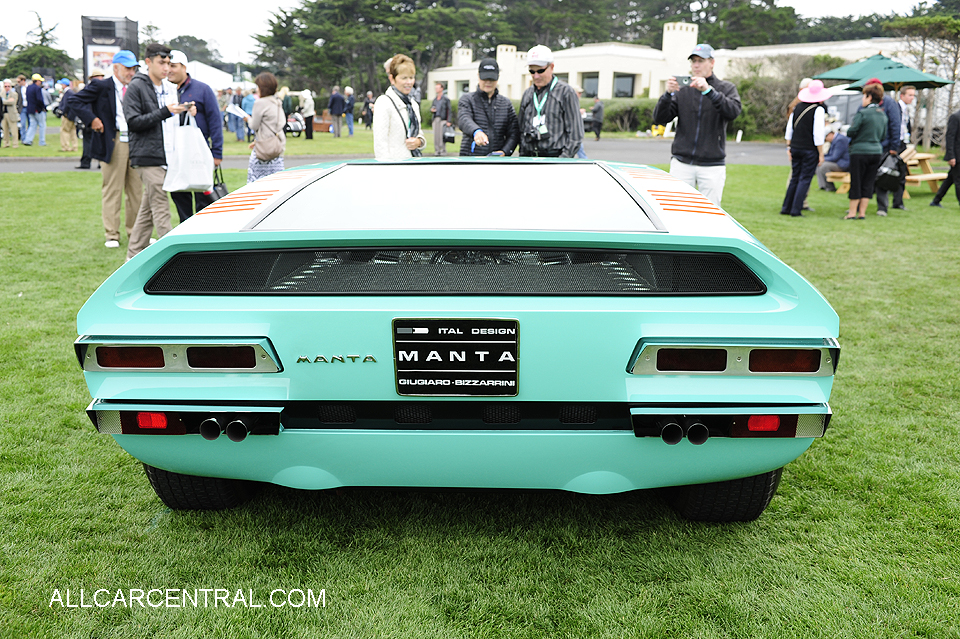
Bizzarrini P538 Italdesign Manta Concept sn-3 1966

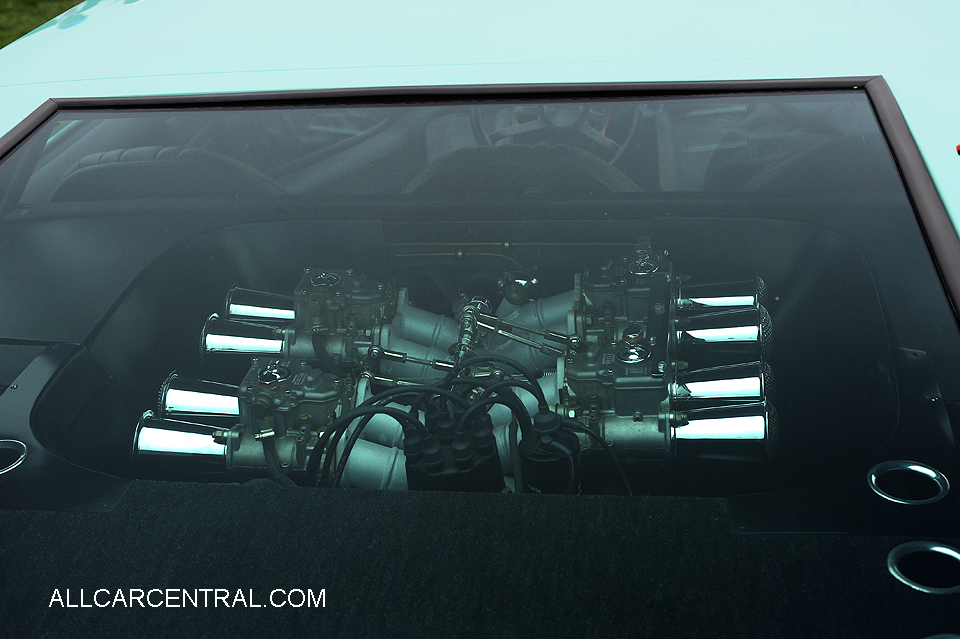
Bizzarrini P538 Italdesign Manta Concept sn-3 1966

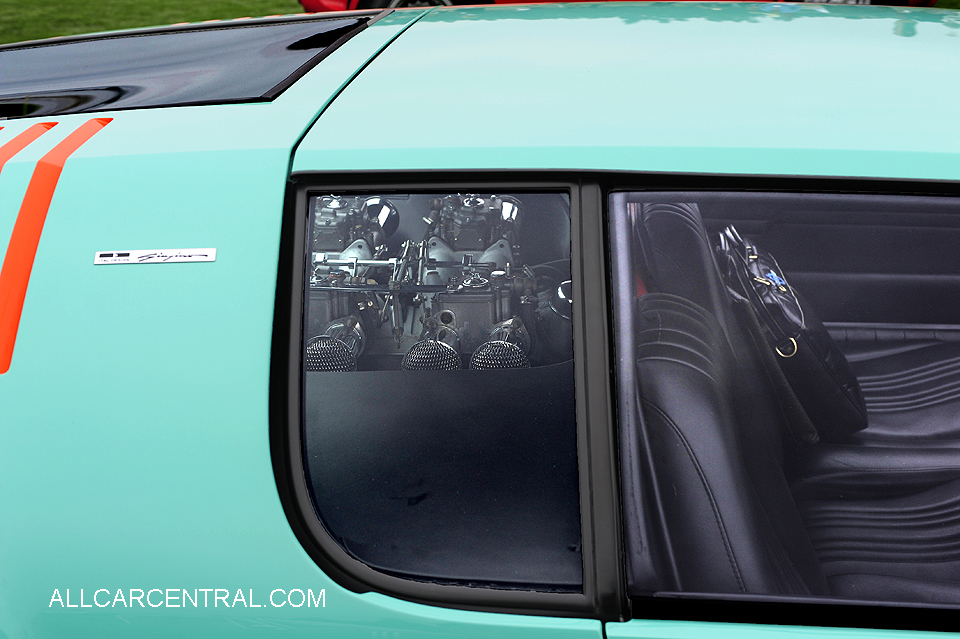
Bizzarrini P538 Italdesign Manta Concept sn-3 1966

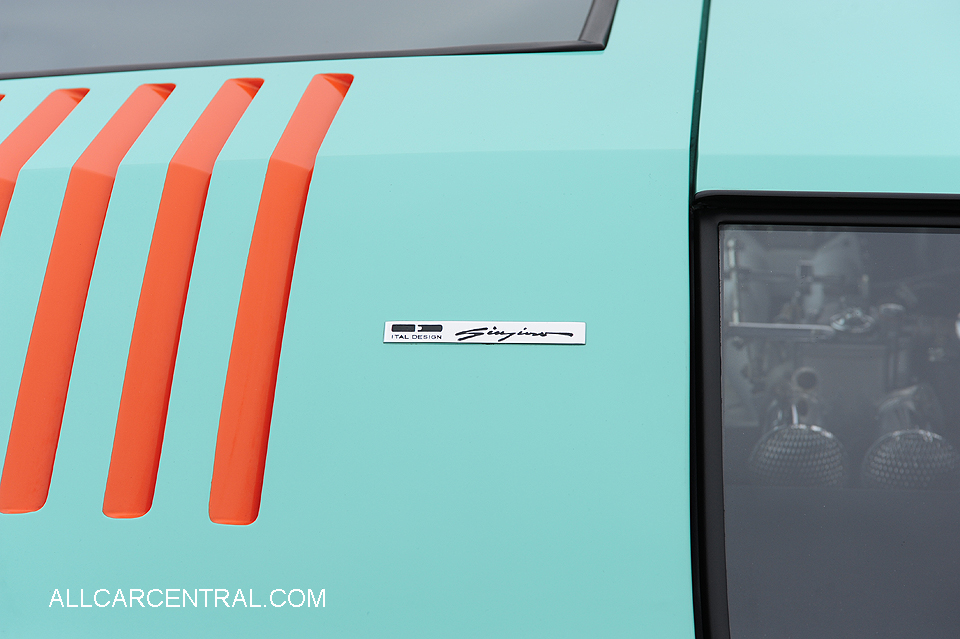
Bizzarrini P538 Italdesign Manta Concept sn-3 1966

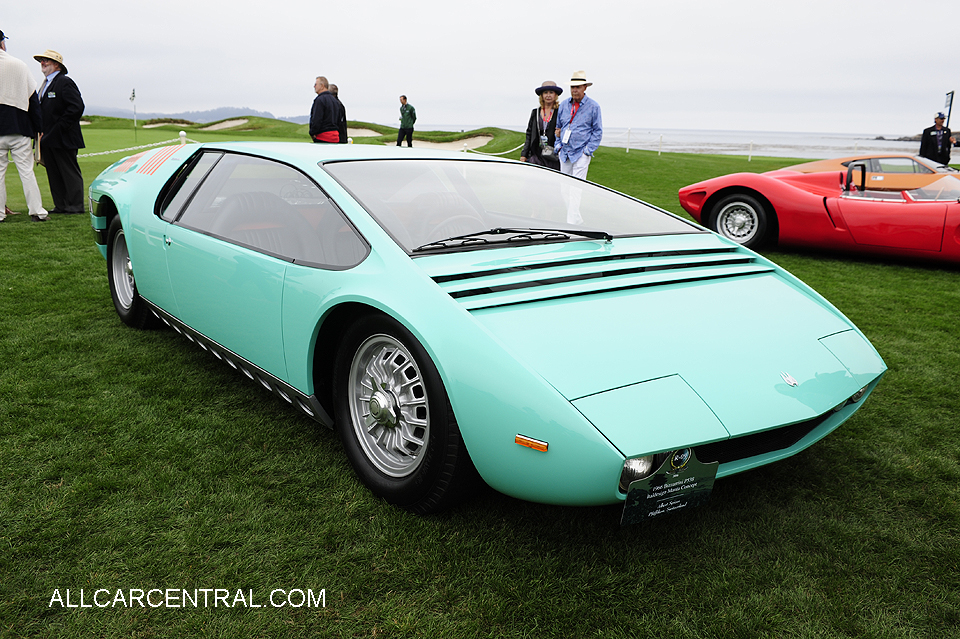
Bizzarrini P538 Italdesign Manta Concept sn-3 1966

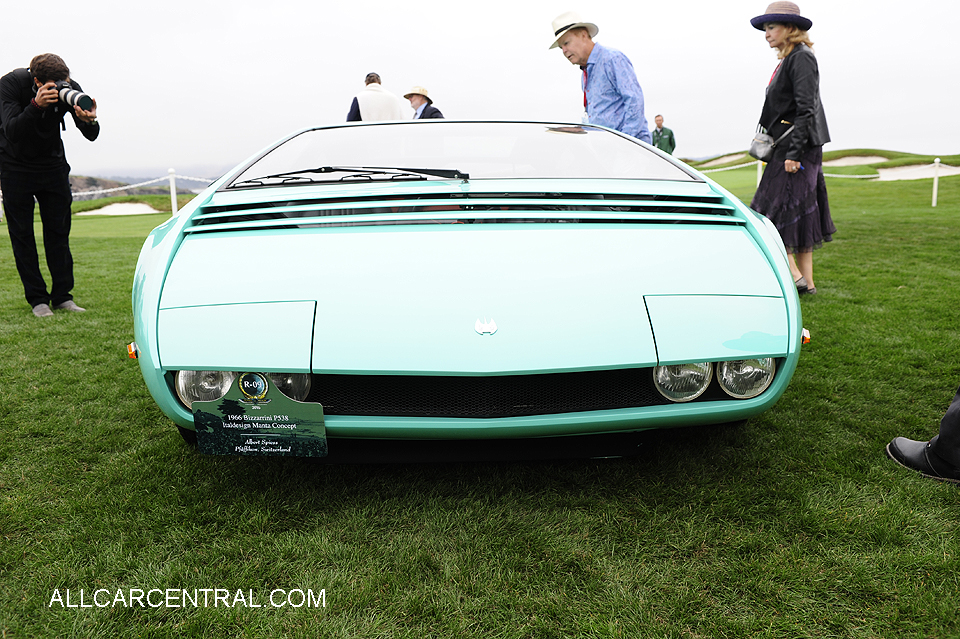
Bizzarrini P538 Italdesign Manta Concept sn-3 1966

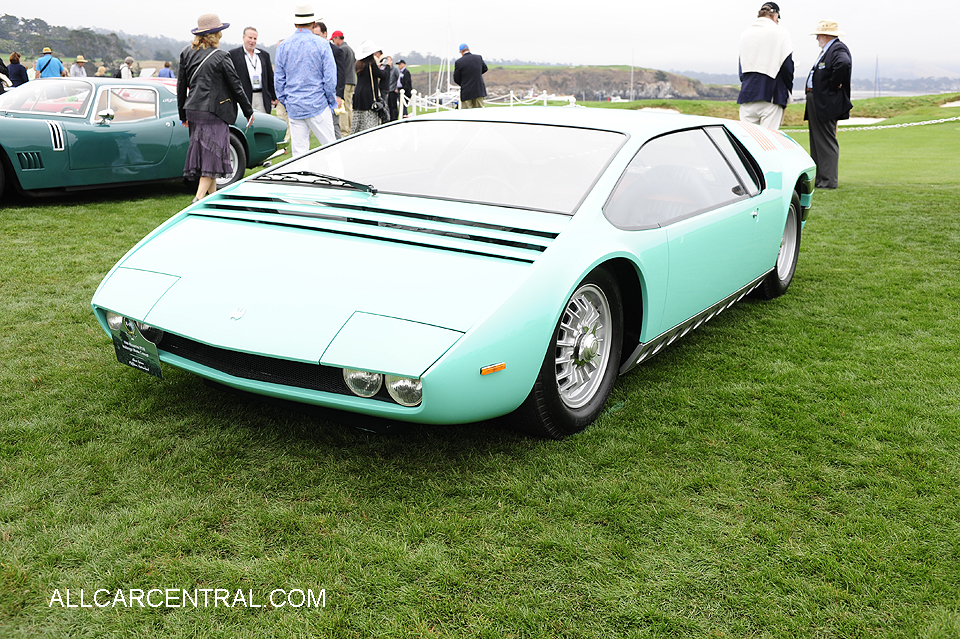
Bizzarrini P538 Italdesign Manta Concept sn-3 1966

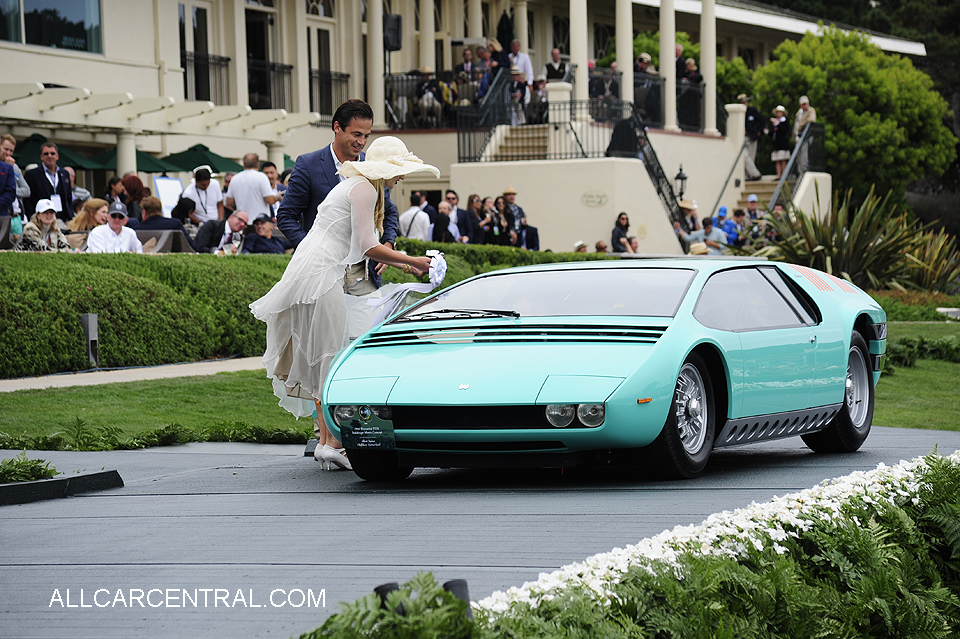
Bizzarrini P538 Italdesign Manta Concept sn-3 1966

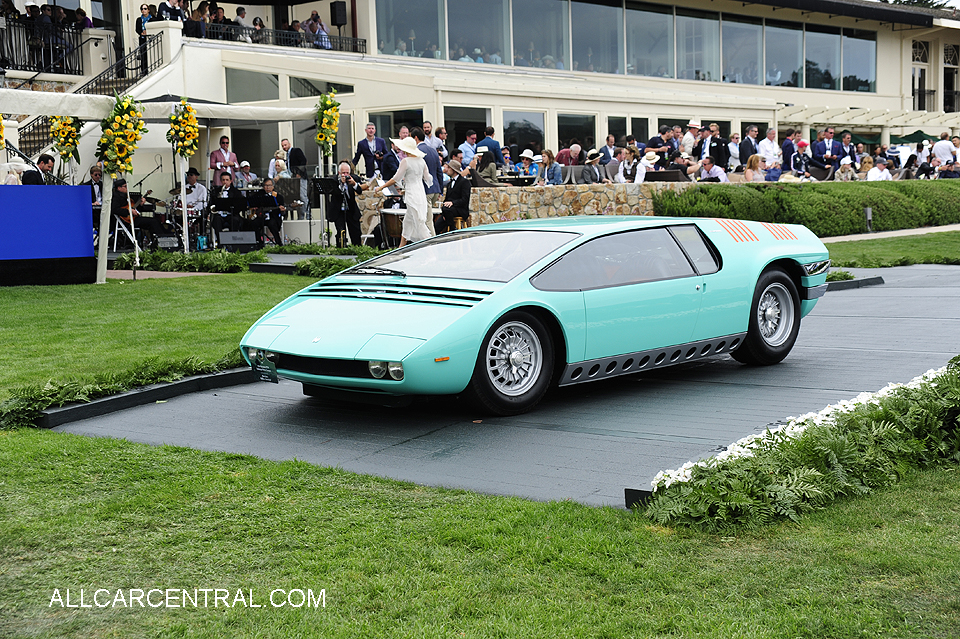
Bizzarrini P538 Italdesign Manta Concept sn-3 1966

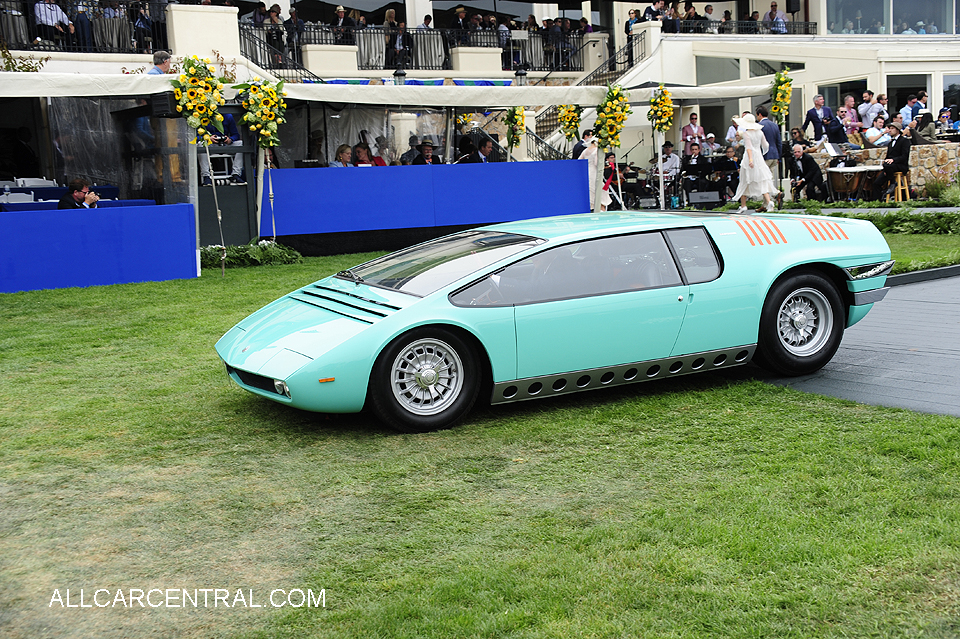
Bizzarrini P538 Italdesign Manta Concept sn-3 1966

BMW
2002 Turbo Coupe 1974
The first BMW 2002s to be turbocharged were entered in the 1969
European Touring Car Championship and, in the hands of Dieter
Quester, one won against stiff opposition from Alfa Romeo GTAs and
Porsche 911s. The 2002 was introduced in 1968, but it was the later
fuel-injected 2002tii that provided the basis for the 2002 Turbo with
its deep front air dam, wheel arch extensions and distinctive bootmounted spoiler. One lovely touch is the mirror-image signwriting
applied by the factory on the front spoiler so other drivers knew
exactly what car was about to overtake them! Produced in 1973 and
1974, the legendary 2002 Turbo was Europe’s first turbocharged
production car. This example, number 238 of the 1,672 built, was
shipped to England in March 1974. Although all were left-hand drive,
the 2002 Turbo was never officially imported into North America. The
current owner bought this car in England in 2001 and restored it.
Source: Pebble Beach Concours media release.

BMW 2002 Turbo Coupe 1974

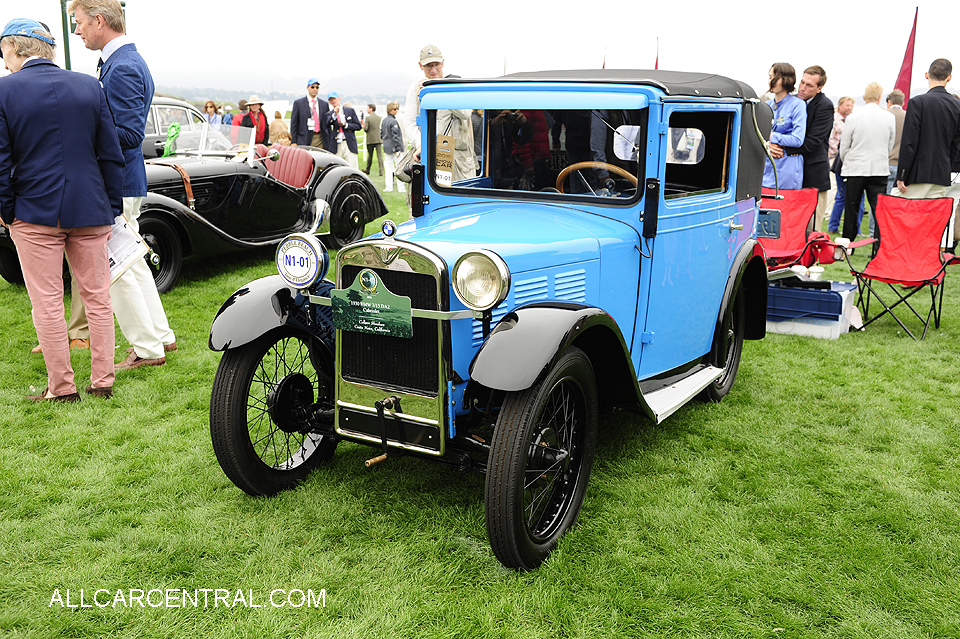
BMW 3-15 DA2 Cabriolet 1930
This 1930 BMW 3/15 DA2 Cabriolet was manufactured in August
1930 and delivered that October to the Union of AutomobileDriving Medical Doctors in Dresden, Germany. A Dr. Freise in Bethel
had purchased it to carry out his house calls. After coming to the
United States, it was owned by Tomas Monaghan, the founder of
Domino’s Pizza, who sold it in 2001 to Mike Sheehan, who gifted it to
his son and daughter when they were 8 years old. The family showed
the little car at Pebble Beach in 2003, and Colleen Sheehan had the
pleasure of receiving Third in Class at the impressionable age of 11.
Source: Pebble Beach Concours media release.

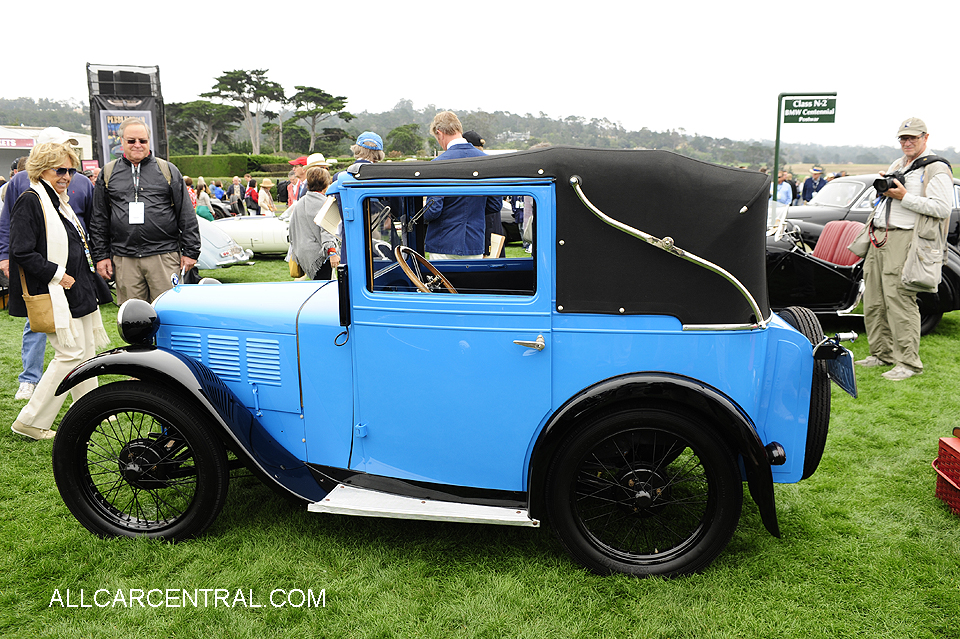
BMW 3-15 DA2 Cabriolet 1930

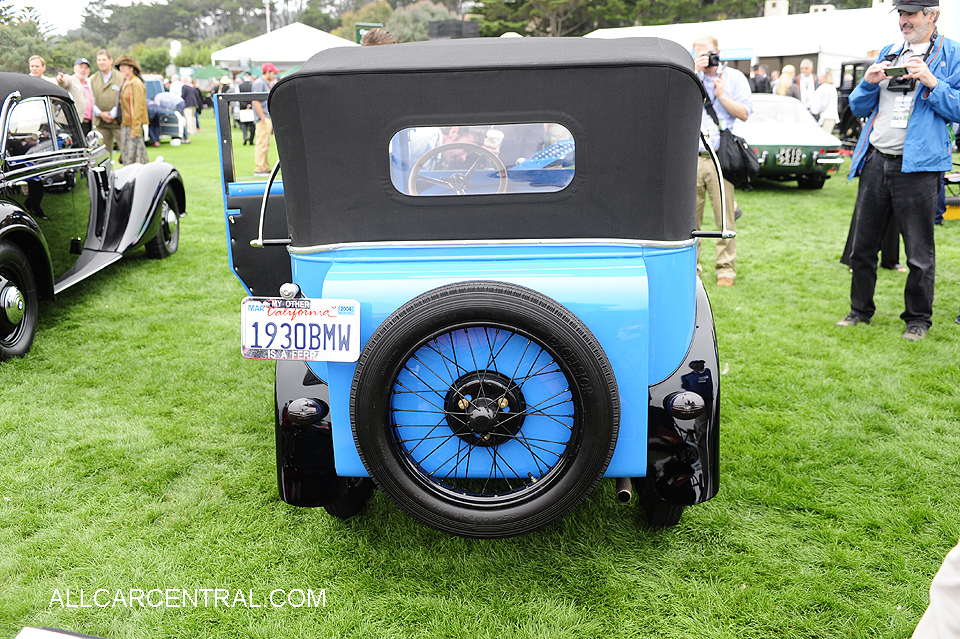
BMW 315 DA2 Cabriolet 1930

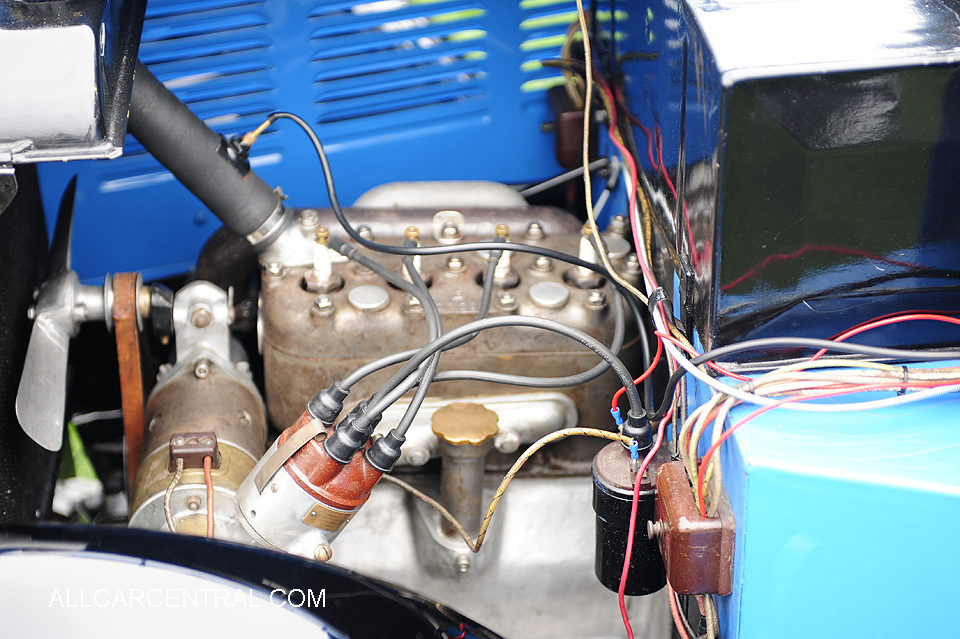
BMW 315 DA2 Cabriolet 1930

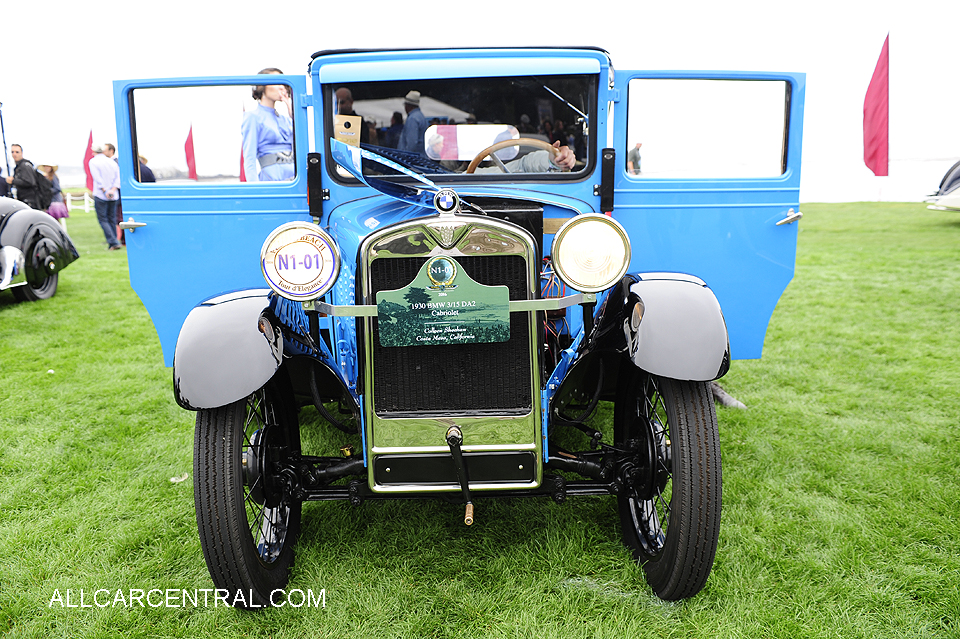
BMW 315 DA2 Cabriolet 1930

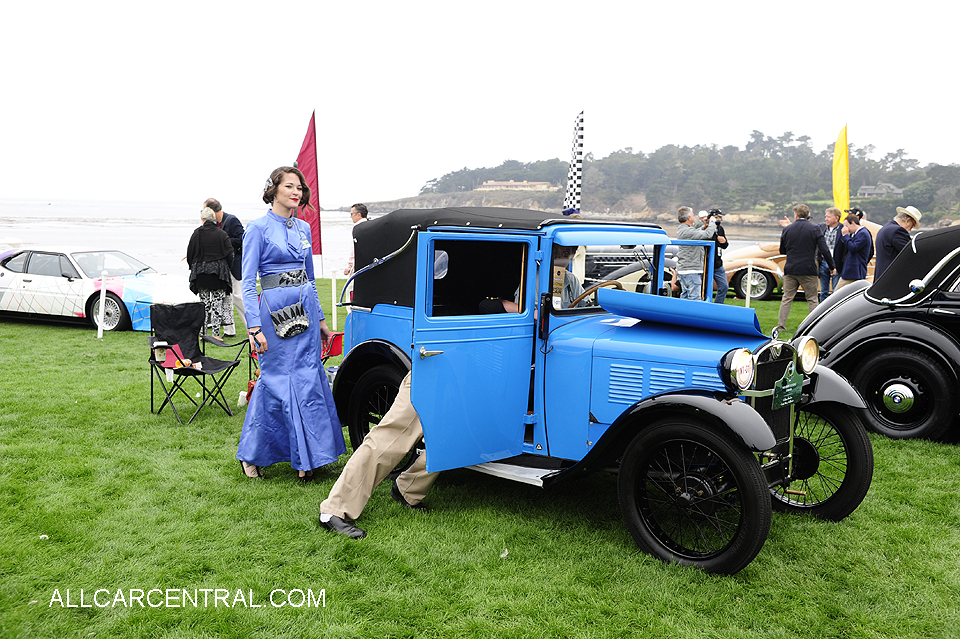
BMW 315 DA2 Cabriolet 1930

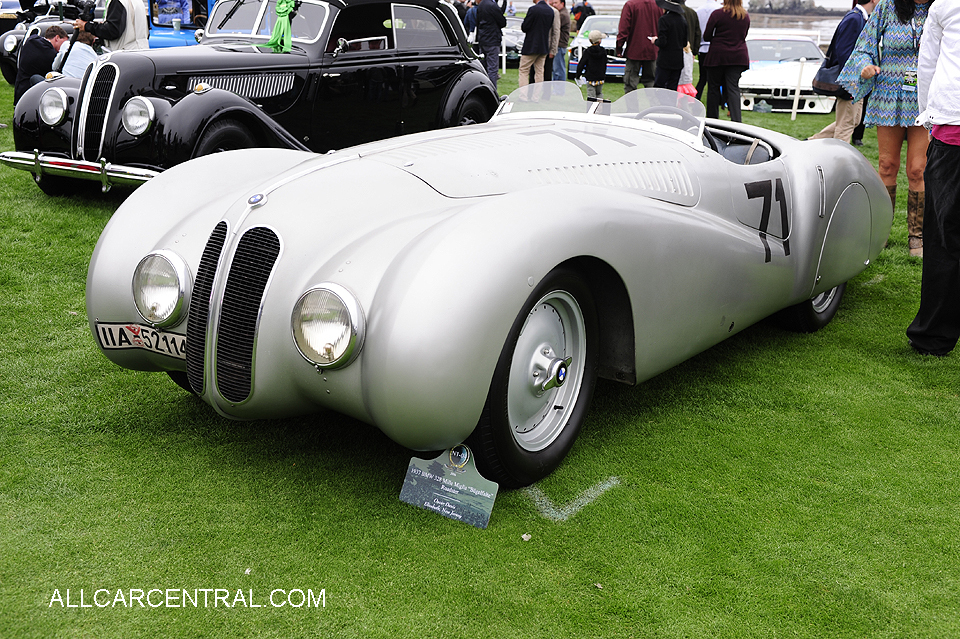
BMW 328 Mille Miglia
Bügelfalte Roadster 1937
This BMW 328 MM was originally built as a special and participated
in the 1937 Le Mans 24 hours, with A. F. P. Fane behind the wheel.
It went on to compete in the 1937 Donnington Tourist Trophy,
and in 1938 Fane and his co-driver, William James, raced it in the
last prewar Mille Miglia, finishing 8th overall and first in class. In the
fall of 1939, the car was dismantled by BMW and the chassis was
used to build this streamlined race car, designed by Wilhelm Kaiser
and finished by Wunibald Kamm, in preparation for the 1940 Mille
Miglia. The pronounced ridge on the fenders resembled the crease
in a pair of ironed trousers, giving the car its nickname of Bügelfalte
(“ironing crease”). The 1940 Mille Miglia encompassed nine laps of
a 110-mile route between Brescia, Mantua and Cremona, and this
roadster, driven by Hans Wencher and Rudolf Scholz, finished 6th.
During the war, the roadster was given to German Minister Albert
Speer, then was seized by Russia as reparations and given to MiG
aircraft engineer Artem Mikoyan. He lent the car to his young son
before he traded the car to Guido Adamson of Latvia in 1972 for a
modern Lada!
Source: Pebble Beach Concours media release.

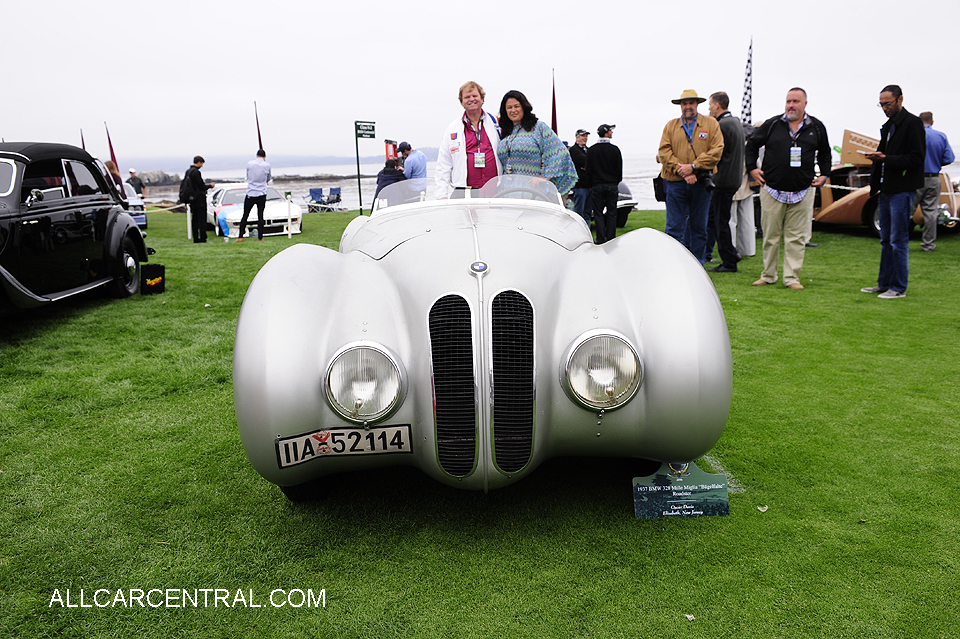
BMW 328 Mille Miglia Bügelfalte Roadster 1937

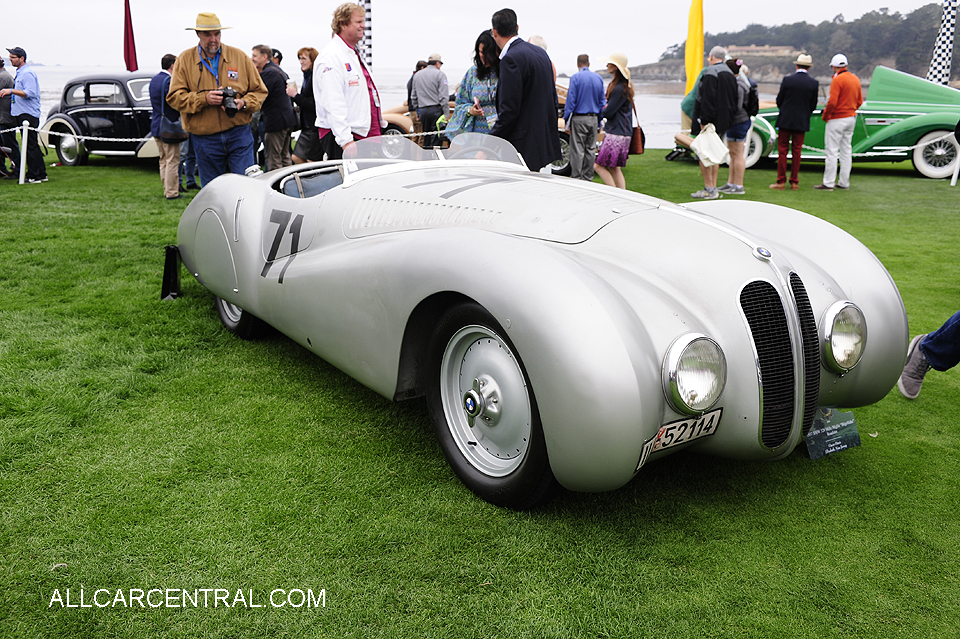
BMW 328 Mille Miglia Bügelfalte Roadster 1937

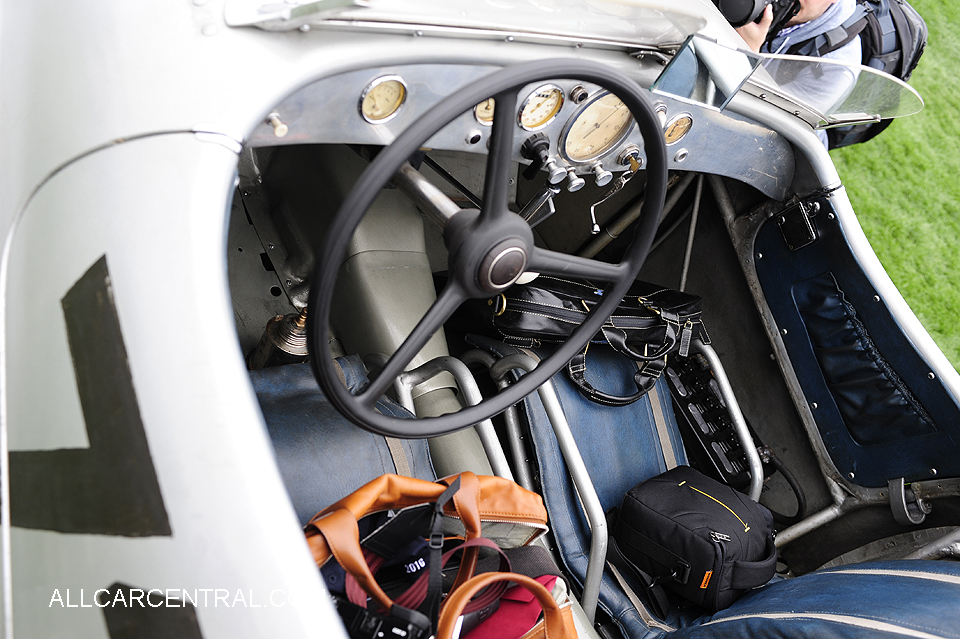
BMW 328 Mille Miglia Bügelfalte Roadster 1937

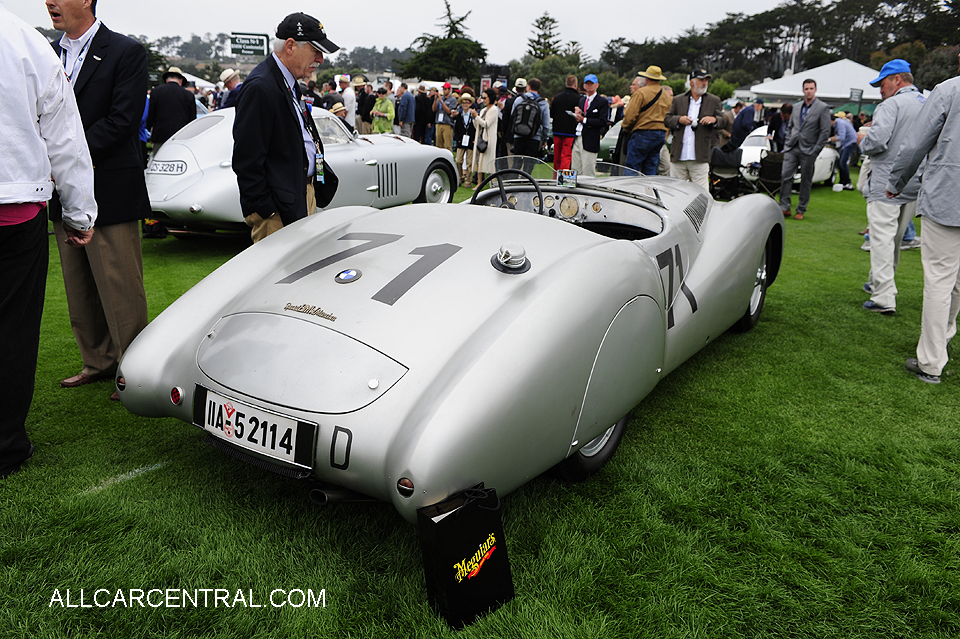
BMW 328 Mille Miglia Bügelfalte Roadster 1937

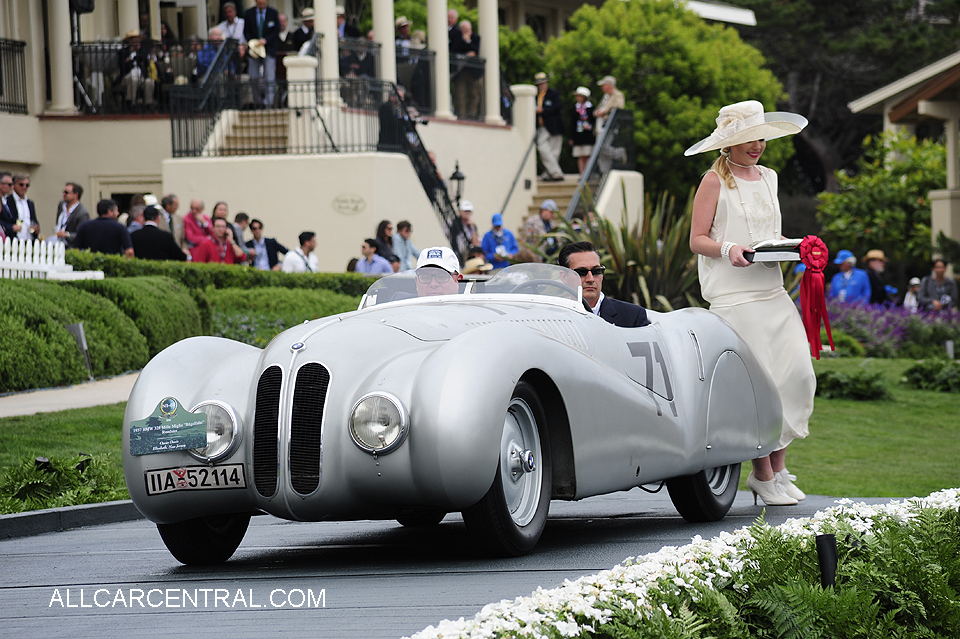
BMW 328 Mille Miglia Bugelfalte Roadster 19937

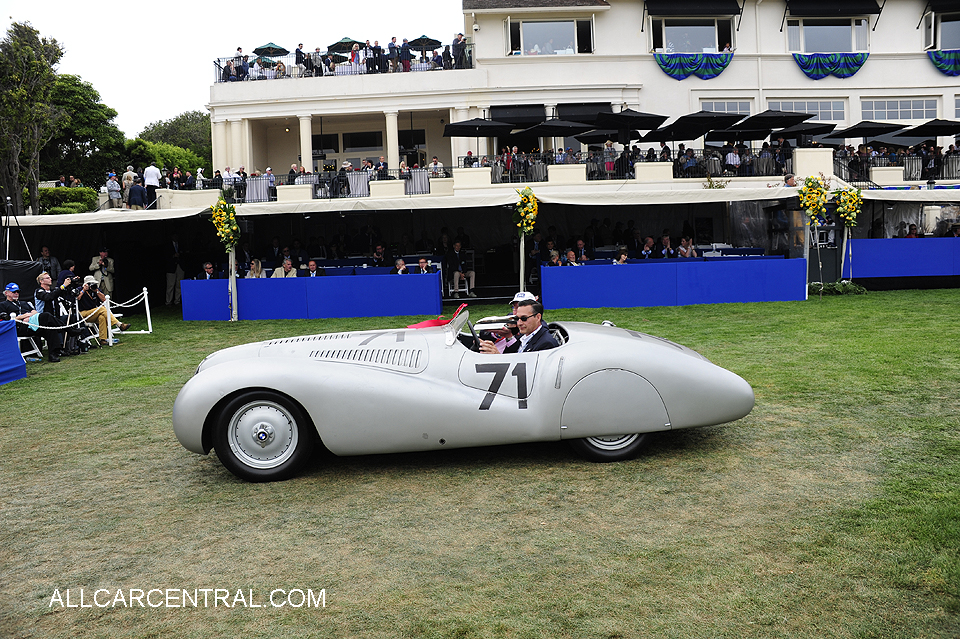
BMW 328 Mille Miglia Bugelfalte Roadster 19937

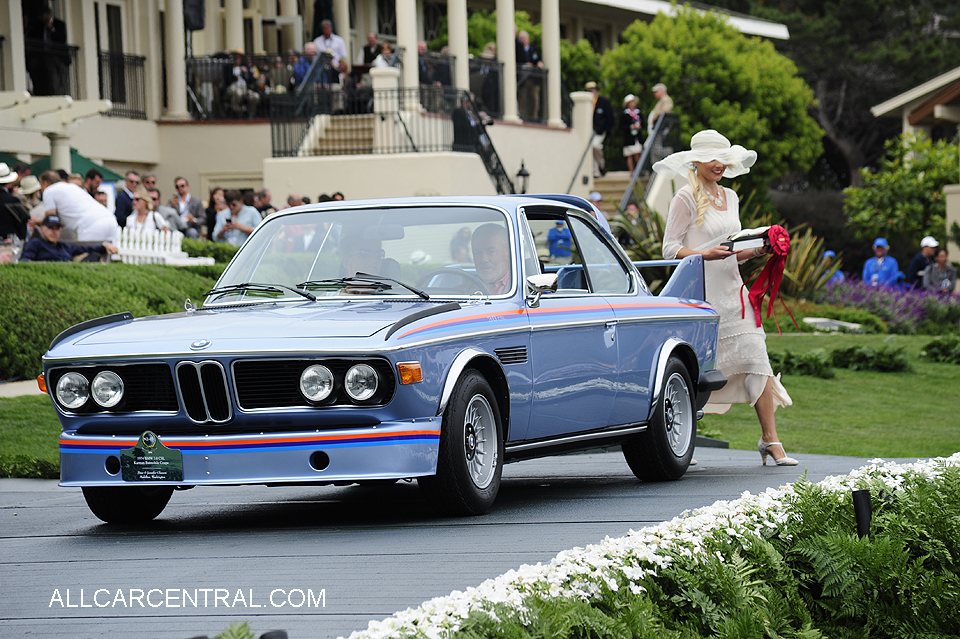
BMW 3.0 CSL
Karman Batmobile Coupe 1974
The BMW 3.0 CSL (Coupe Sport Leicht) was BMW’s first foray into
motorsport, and it quickly became one of the most successful touring
cars of all time in the hands of top drivers, including Niki Lauda, Hans
Stuck, Dieter Quester and Jacky lckx. In 1973 Dutch driver Toine
Hezemans captured the European Touring Car Championship for
BMW at the wheel of a 3.0 CSL, and he co-drove the same model
with Dieter Quester to a class win at Le Mans. From 1975 until 1979
the BMW “Batmobiles” won five consecutive European Touring
Car Championships. The Batmobiles are possibly the most iconic
postwar BMWs, with only 110 Series l made and 57 Series II. This car
is a Series II and is the only lightweight Batmobile in its original blue
paintwork and one of only 33 still on the road.
Source: Pebble Beach Concours media release.

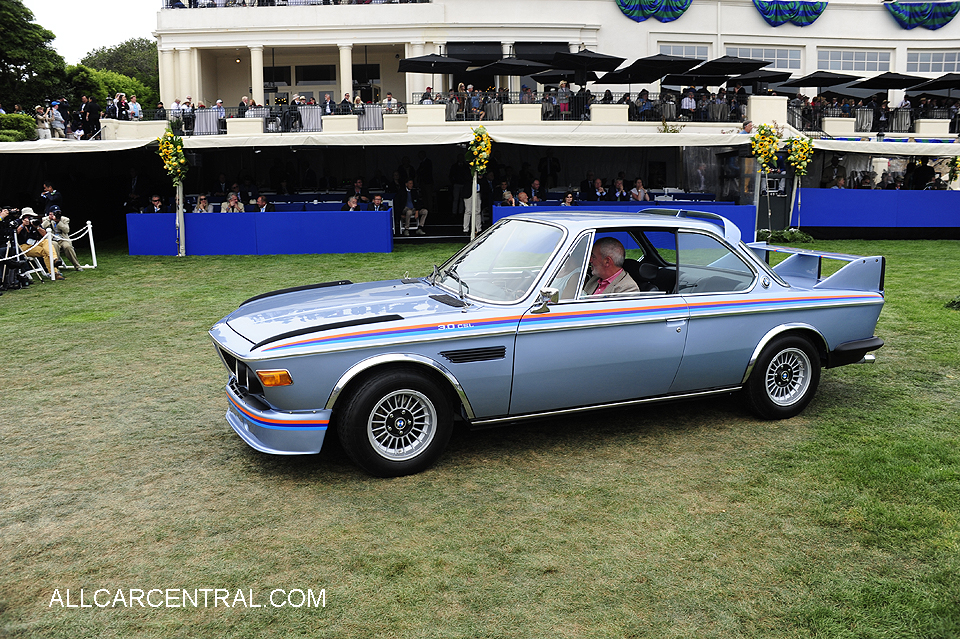
BMW 3.0 CSL Karman Batmobile Coupe 1974

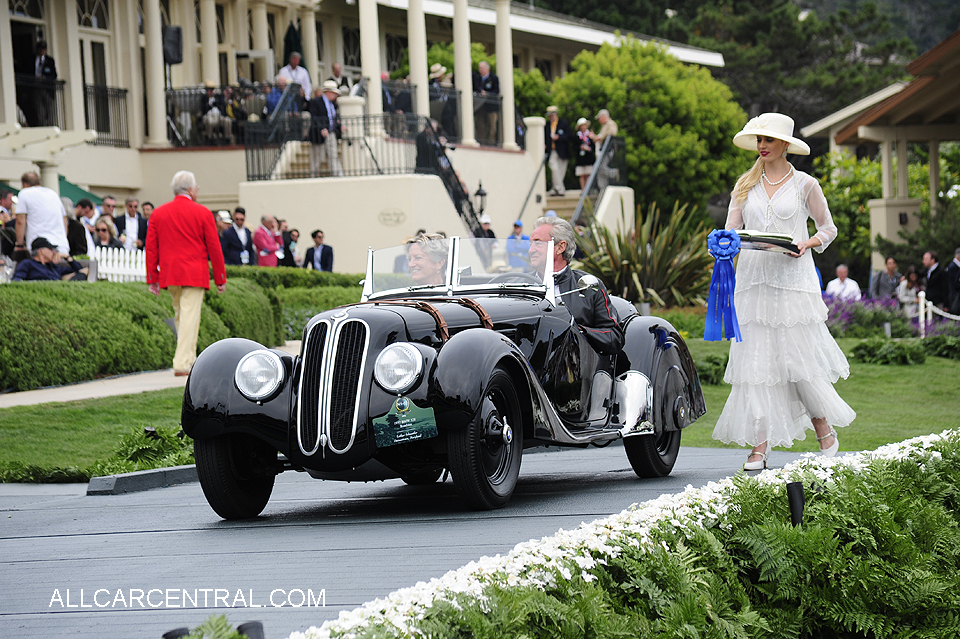
BMW 328
Roadster 1937
The prototype BMW 328 roadster was first seen at the 1936
Eifelrennen at the Nürburgring when it was driven to 1st place by
Ernst Henne. The 328 was powered by a 6-cylinder engine designed
by Rudolf Schleicher with a revolutionary new cylinder head with
triple Solex carburetors giving the car tremendous performance
without the need for supercharging. The 100 bhp BMW 328s went on
to win their class at the Mille Miglia, the 24 Hours of Le Mans, the 24
Hours of Spa, and Britain’s Tourist Trophy. Only 464 BMW 328s were
built before 1940, and although they came in a surprising array of
Ferrari Competition
colors, nearly half were white and only 18 were black. This car is the 14th
BMW 328 to be finished and one of just 6 black cars delivered in 1937. It
was used by the German army during World War II, then disappeared
until 1953, when it was sold to a US army officer stationed in Europe
who kept it for 37 years. Its current owner acquired it in 2004.
Source: Pebble Beach Concours media release.

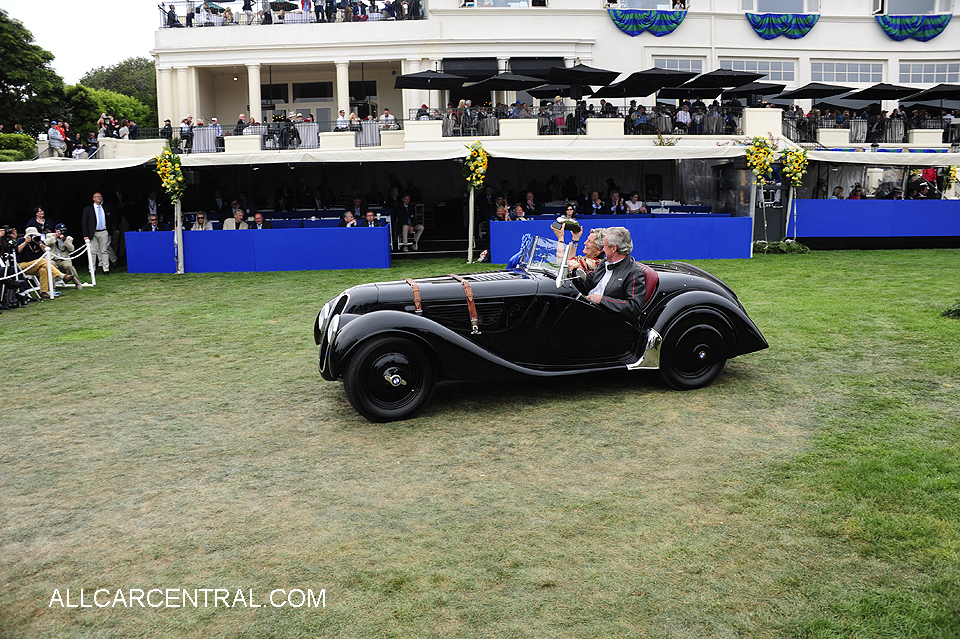
BMW 328 Roadster 1937

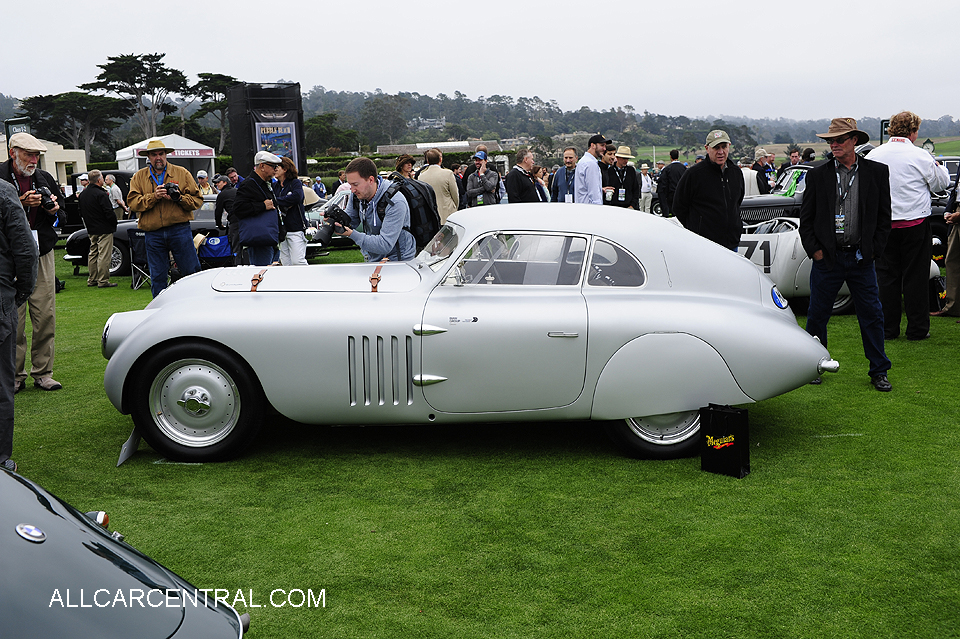
BMW 328 Touring Coupe 1939
Carrozzeria Touring in Milan built this aerodynamic and lightweight
“superleggera” body on a BMW 328 chassis for use in long-distance
racing. Intensive engine tuning provided more than 130 bhp and
a top speed of 137 mph. The car was first used in the 24 Hours of
Le Mans in 1939, where it was driven by Max Prinz zu SchaumburgLippe and Hans Wencher and won the 2-liter sports car class. The
following year the car was driven by Fritz Huschke von Hanstein and
Walter Bäumer to an overall victory in the Mille Miglia. The coupé
raced for the last time at the Ruhestein Hillclimb in July 1946, the
first German race held after the war. BMW Classic acquired this car
in 2002 and carried out a comprehensive restoration, returning the
car to its original condition. The coupé is on display at the BMW
Museum but it also campaigns in events such as the Mille Miglia
Retrospective.
Source: Pebble Beach Concours media release.

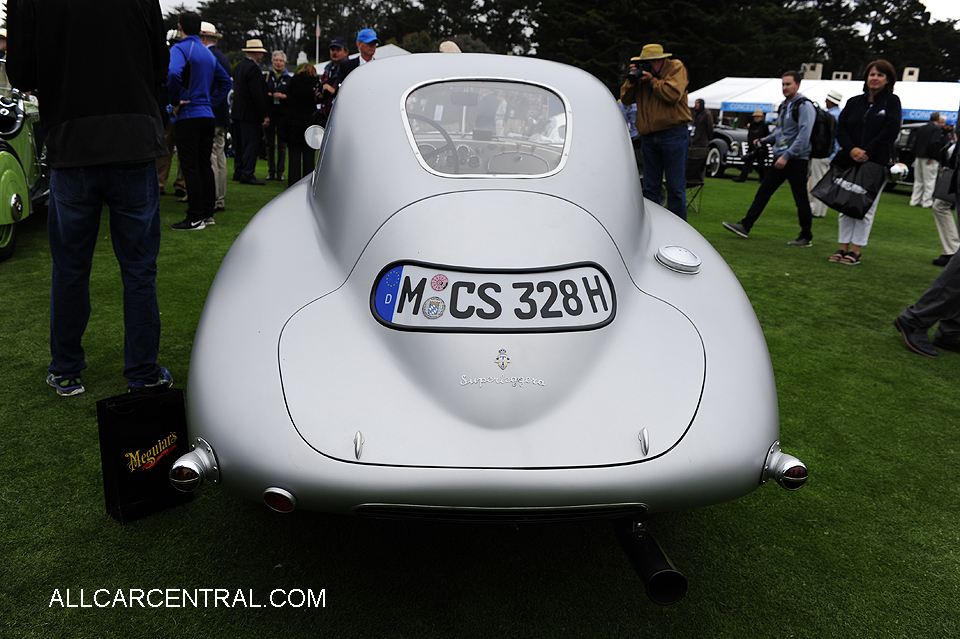
BMW 328 Touring Coupe 1939

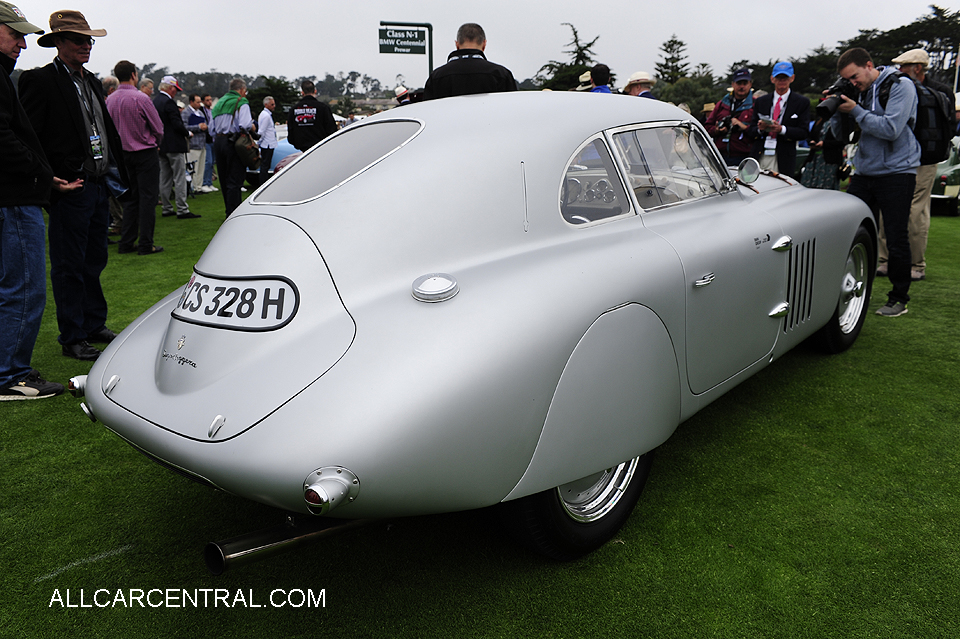
BMW 328 Touring Coupe 1939

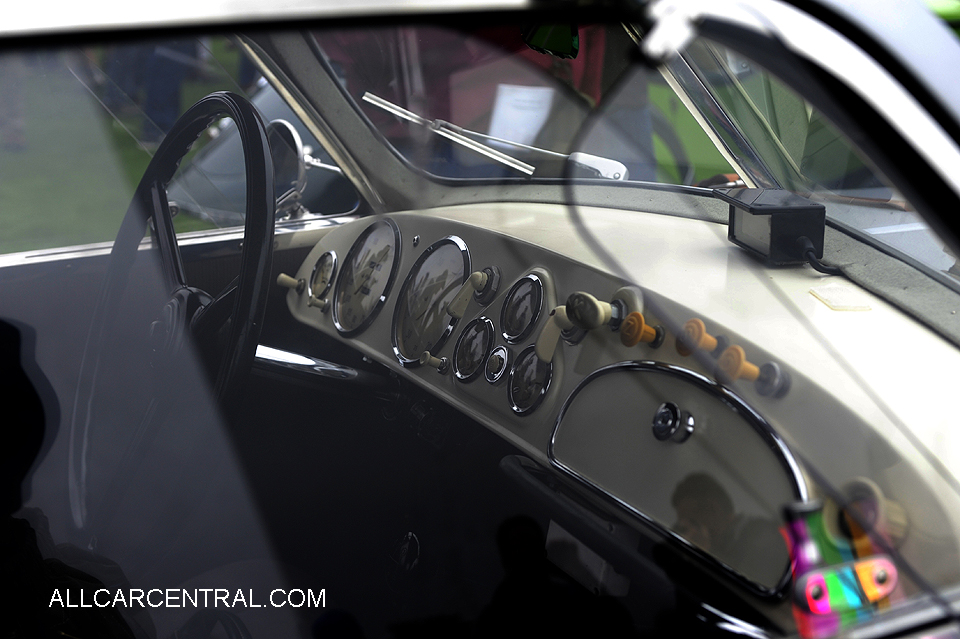
BMW 328 Touring Coupe 1939

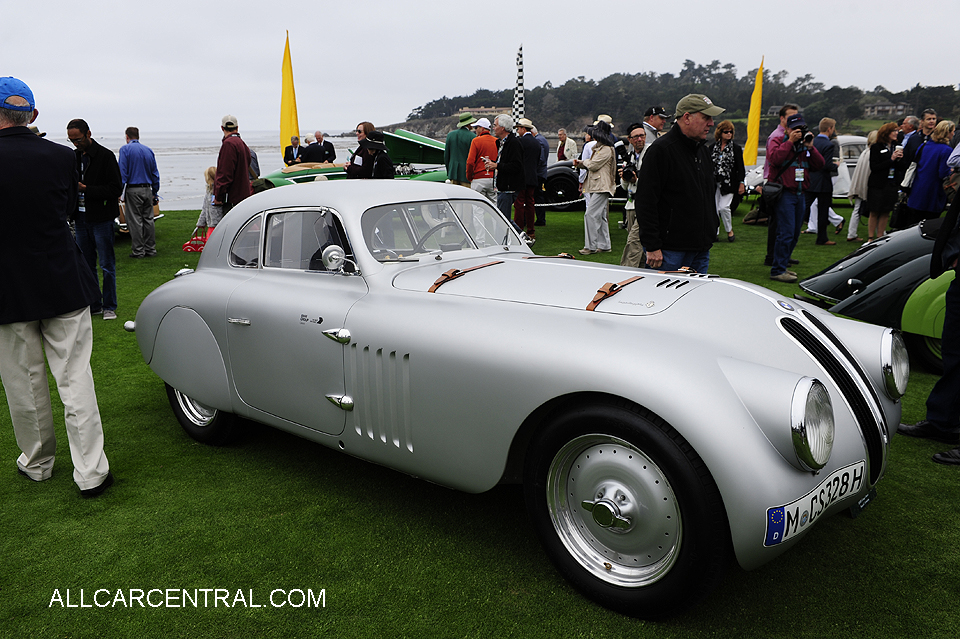
BMW 328 Touring Coupe 1939

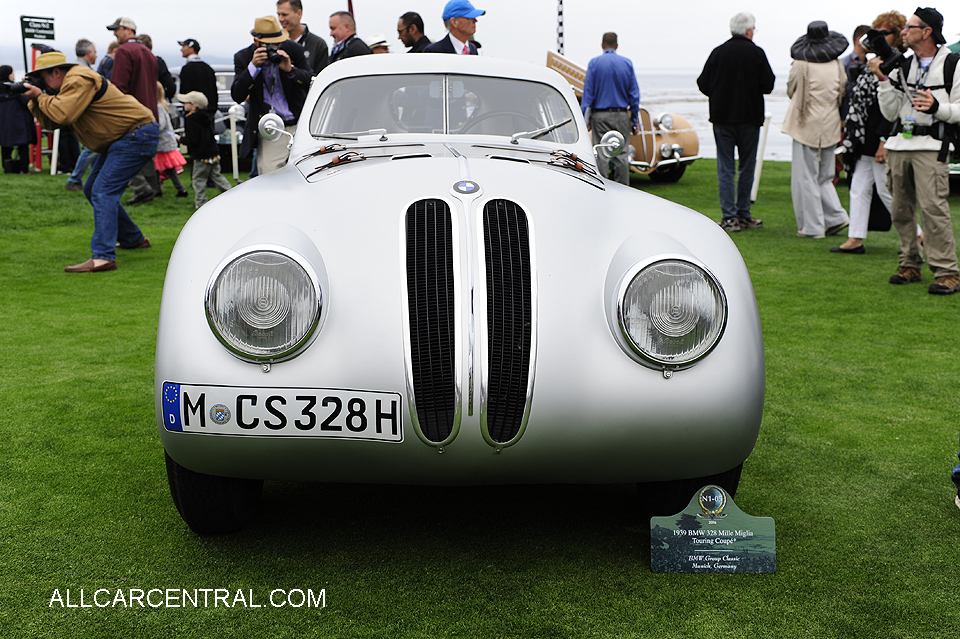
BMW 328 Touring Coupe 1939

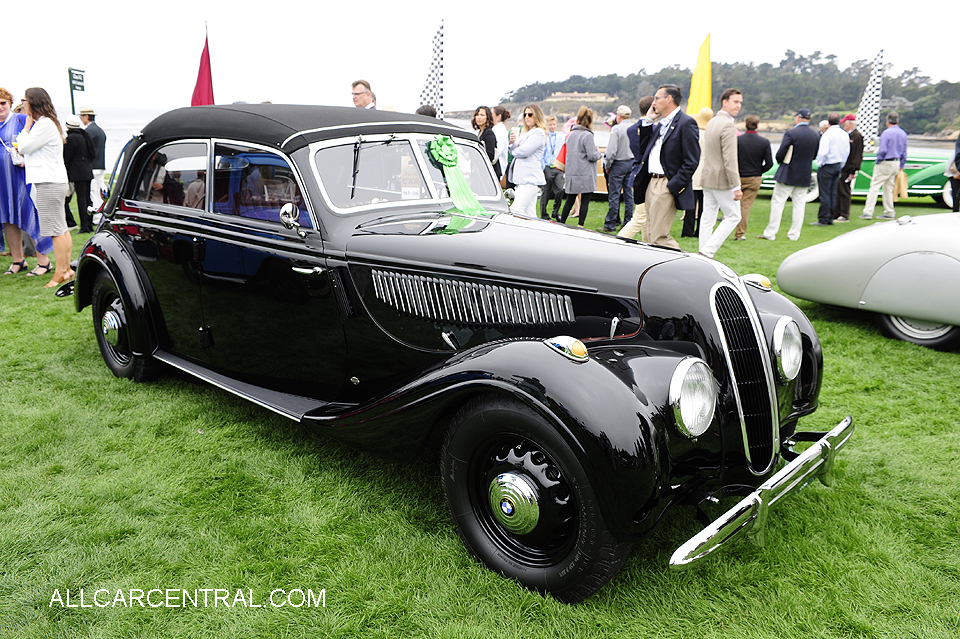
BMW 335
Autenrieth Cabriolet Sedan 1940
This car is believed to be one of just six surviving BMW 335s of
the 40 originally built. Manufactured between 1939 and 1941, the
335 was larger than all the previous BMW models and had a 3.5-
liter engine capable of about 90 mph. It was also BMW’s first luxury
model with a fully synchromesh, four-speed transmission. This car
was brought to the United States by an officer in 1947, and it has
had two distinguished owners: Robert Sonsten, an expert in classic
BMWs, acquired the car in 1967 and then sold it in 2005 to William
Young, who was given the Professor Gerhard Knöchlein Award for
his work in preserving the BMWs. Young said this was his favorite car
from among his collection of over 40 BMWs.
Source: Pebble Beach Concours media release.

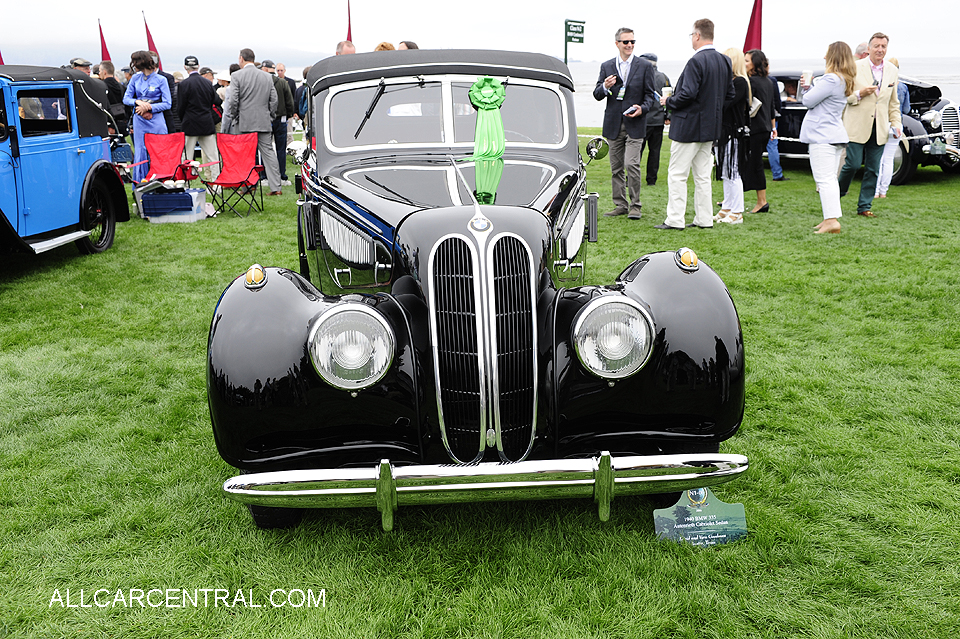
BMW 335 Autenrieth Cabriolet Sedan 1940

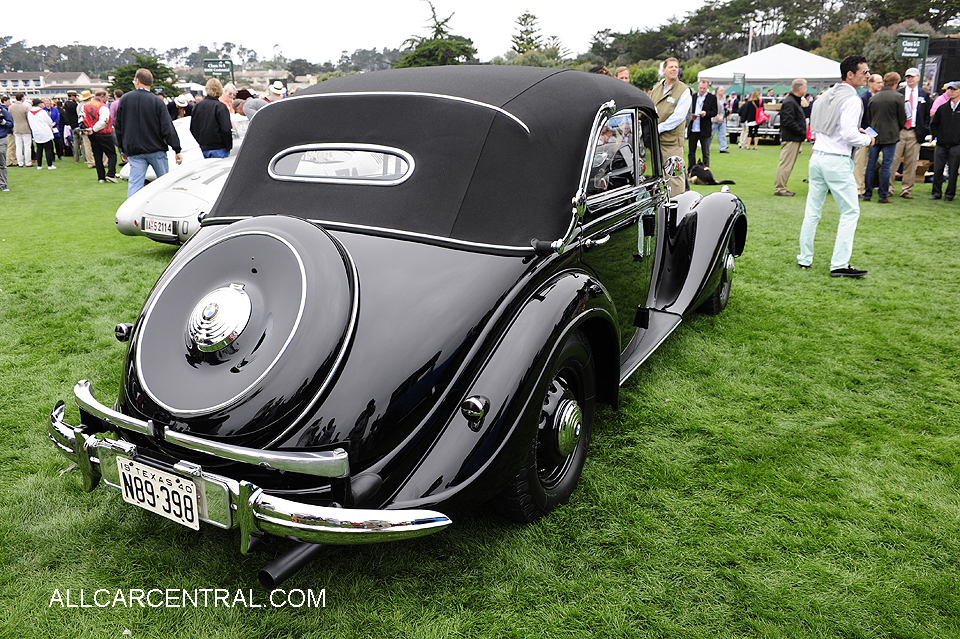
BMW 335 Autenrieth Cabriolet Sedan 1940

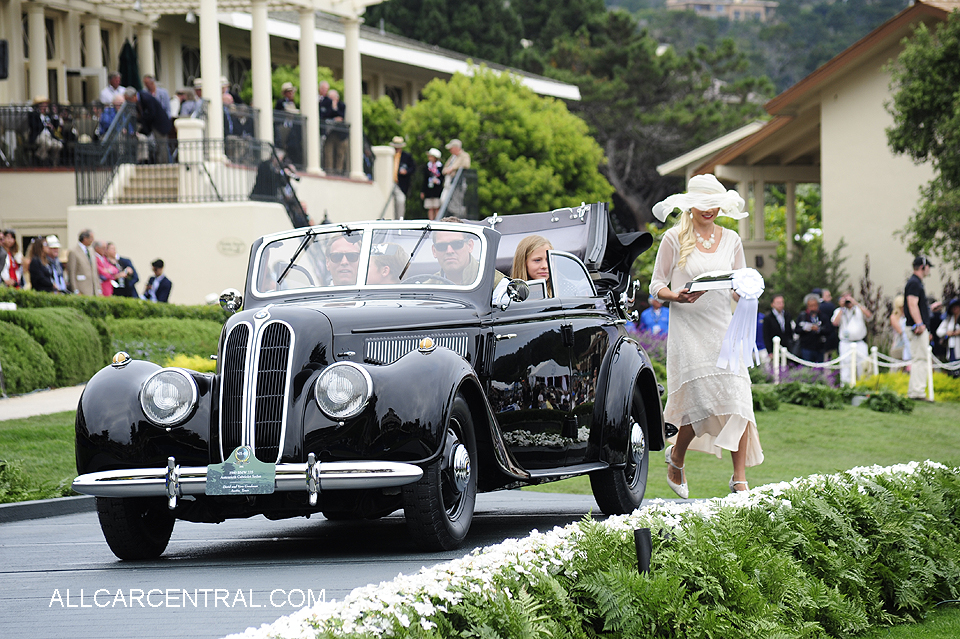
BMW 335 Autenrieth Cabriolet Sedan 1940

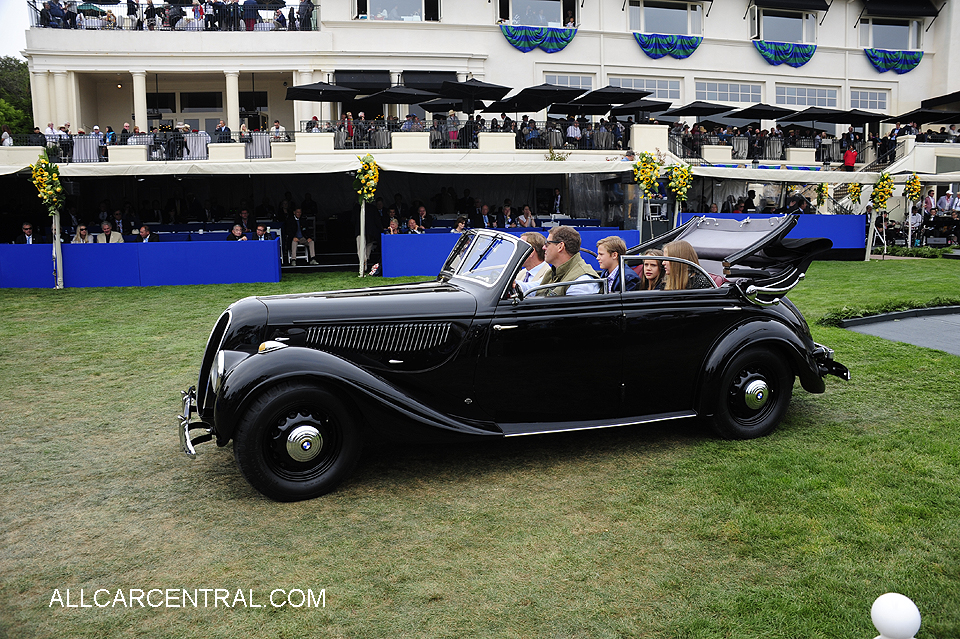
BMW 335 Autenrieth Cabriolet Sedan 1940

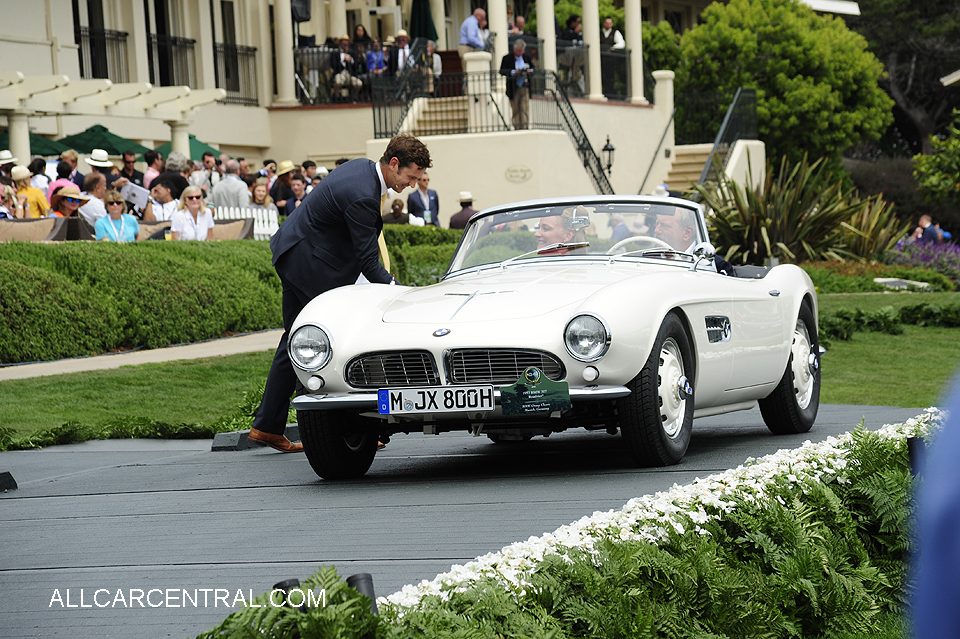
BMW 507
Roadster sn-70079 1957
BMW presented the first 507 roadster, designed by Raymond Loewy
and Albrecht Graf Goertz, at the Frankfurt Motor Show in 1955. This
new sports car was based on the 3.2-liter saloon, but with power
increased to 150 bhp and a top speed of 127 mph. Many of the 254
examples of the BMW 507 were ordered by celebrities and almost all
have survived. This car (chassis 70079) was shown at the Frankfurt
Motor Show in 1957, was later tested by many automobile magazines,
and even played a role in a full-length feature film. In December 1958,
this white BMW 507 was leased to Elvis Presley, who had just started
his military service in Germany. Because the car was continuously
being daubed with messages written in red by female fans, Elvis
had it repainted in red. He kept it for two years. Jack Castor from
California purchased it in 1968 and kept it until BMW Group Classic
acquired it in 2014.
Source: Pebble Beach Concours media release.

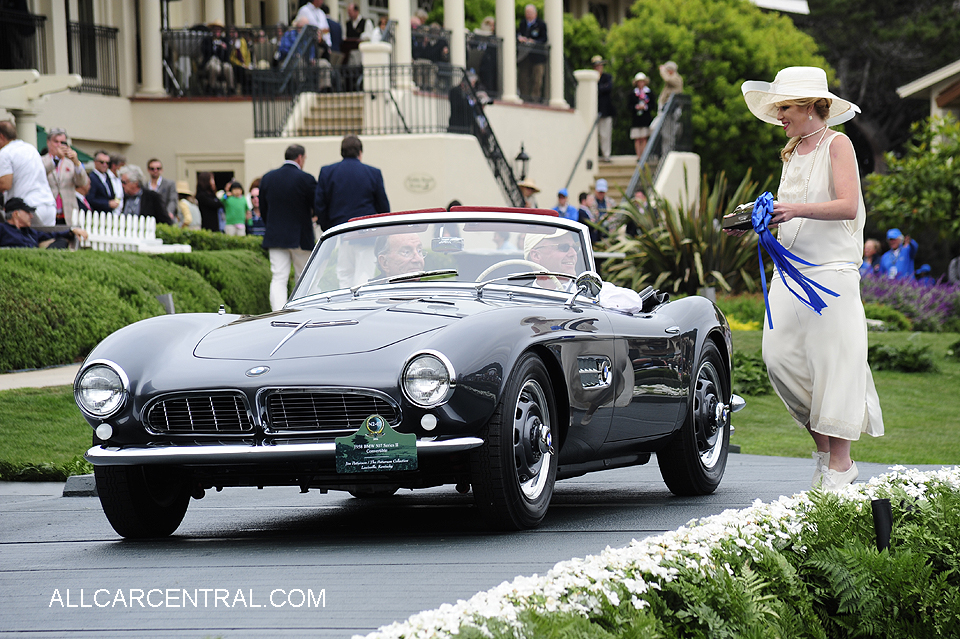
BMW 507 Series II Convertible
1958
After the first BMW 507 roadster debuted in 1955, a revised and
refined Series II model was introduced in 1957. BMW hoped to export
the car to the United States at a rate of thousands per year, but the
507 ended up being too expensive and just 254 cars were produced.
North American BMW Importer Max Hoffman was, in effect, the father
of the 507; he suggested BMW should build an exclusive roadster
to compete with the Mercedes-Benz 300 SL. The BMW 507, with its
curvaceous lines and distinctive, shark-like louvers, was designed by
Count Albrecht von Goertz. This low-mileage, 507 Series II roadster
with lightweight Rudge wheels and removable hardtop was bought
new by racing driver Alan Friedland of Pennsylvania who raced the car
in Sports Car Club of America events in the 1960s. It was later bought
by Malcolm Pray in 1972 and stayed in his collection until 2014.
Source: Pebble Beach Concours media release

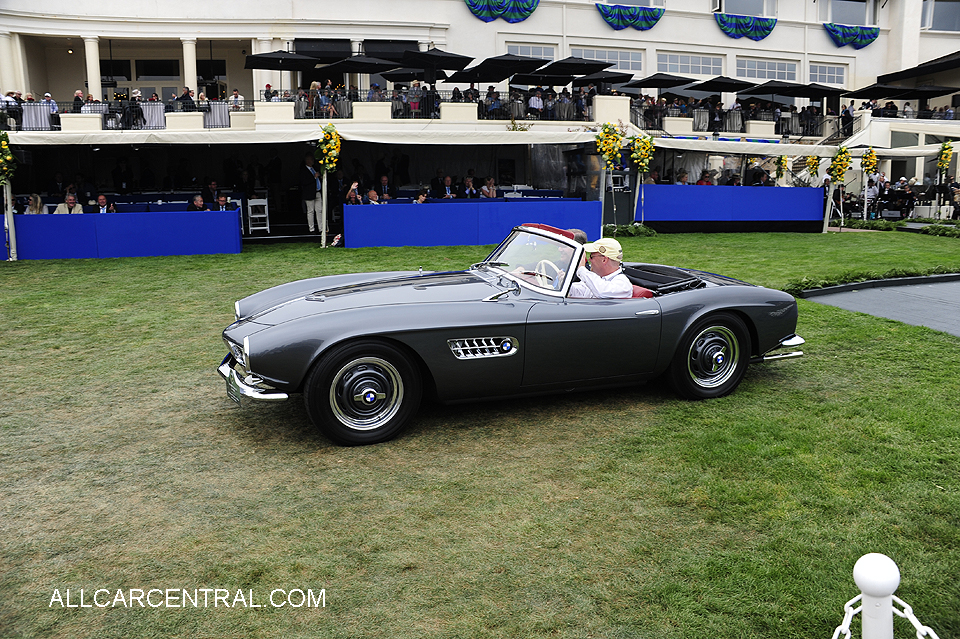
BMW 507 Series II Convertible 1958

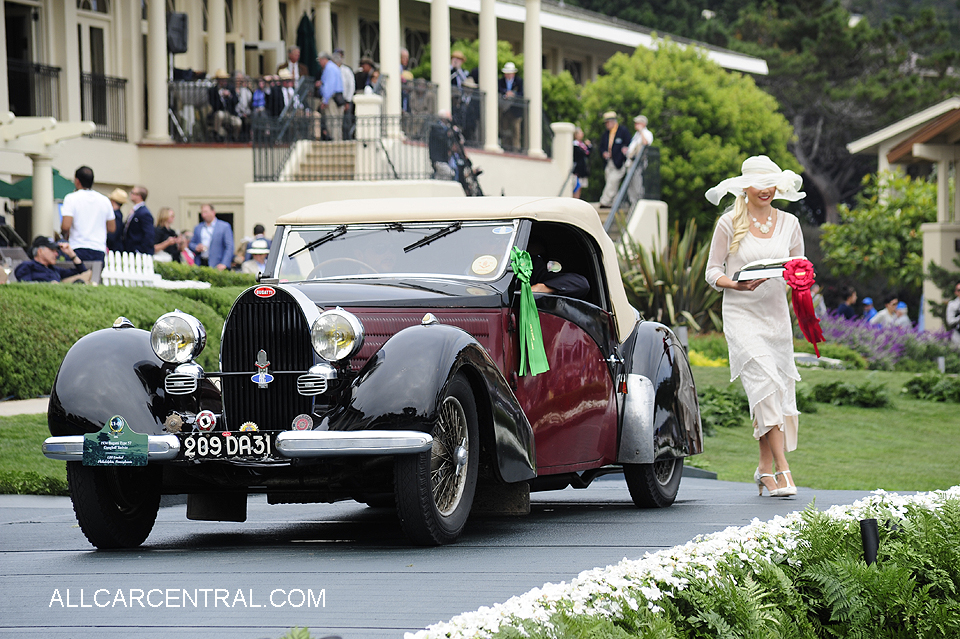
Bugatti Type 57
Gangloff Stelvio 1934
The Bugatti Type 57, introduced in 1934, incorporated many new
features. It was the first new model built under Jean Bugatti’s
direction and with his own coachwork designs built by a number of
outside companies. This 1934 Bugatti Type 57 with Stelvio body was
built by Carrosserie Gangloff in Colmar, France. An early Type 57, it
owes its existence to the fact that it was hidden under a pile of hay in
a barn in France during World War II. Its third owner was a CIA agent,
who acquired the car while serving in Europe. After returning to the
United States he sold it to the current owners, who carefully cared
for and stored it in a climate-controlled facility until the present day.
Source: Pebble Beach Concours media release.

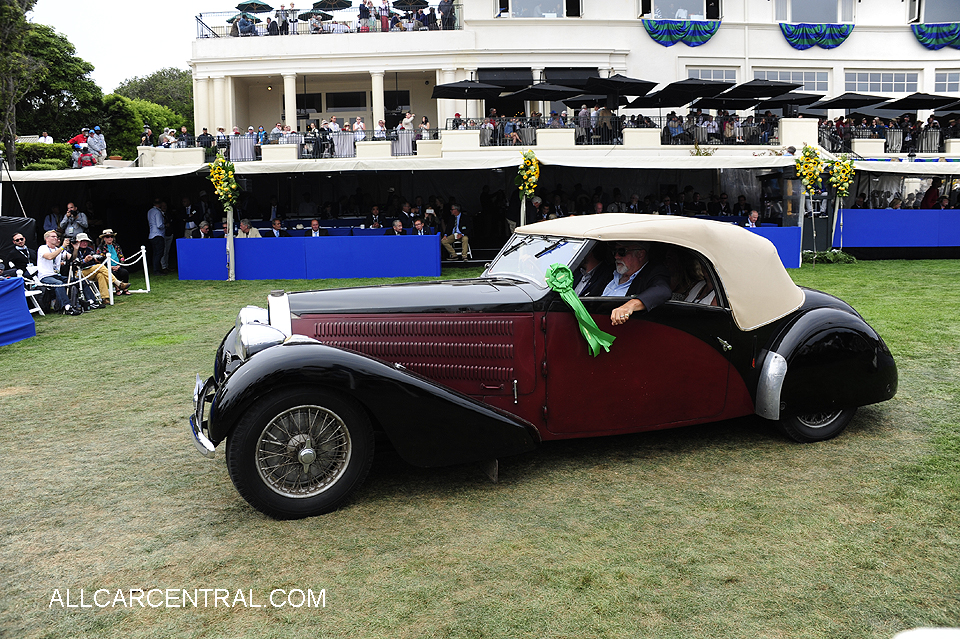
Bugatti Type 57 Gangloff Stelvio 1934

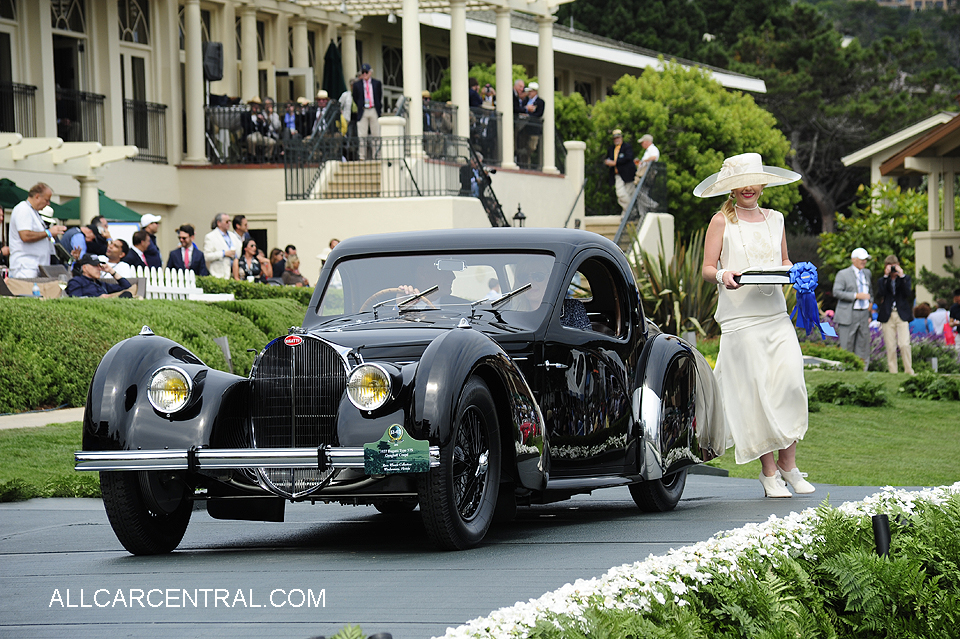
Bugatti Type 57S Gangloff
Coupe sn-57532 1937
The Bugatti Type 57, designed by Ettore Bugatti’s talented son, Jean,
was built between 1934 and 1940. Most were bodied as Galibier
and Ventoux sedans, Stelvio drophead coupés, and later Atalante
coupés with coachwork by Bugatti or by Gangloff in nearby Colmar.
This Type 57S coupé by Gangloff (chassis 57532) was ordered by
a young French doctor who fought for the French resistance. The
Type 57S was the most sporting of all the Type 57 models, with its
surbaissé (low) race-proven chassis and powerful 3.3-litre engine.
This two-seat model was especially fast and caused a sensation on
the roads of rural France. The Type 57S was a very rare car ordered by
very discriminating customers. This example was recently restored
by its current owner, who described it as “an athlete dressed in a
tuxedo.”
Source: Pebble Beach Concours media release.

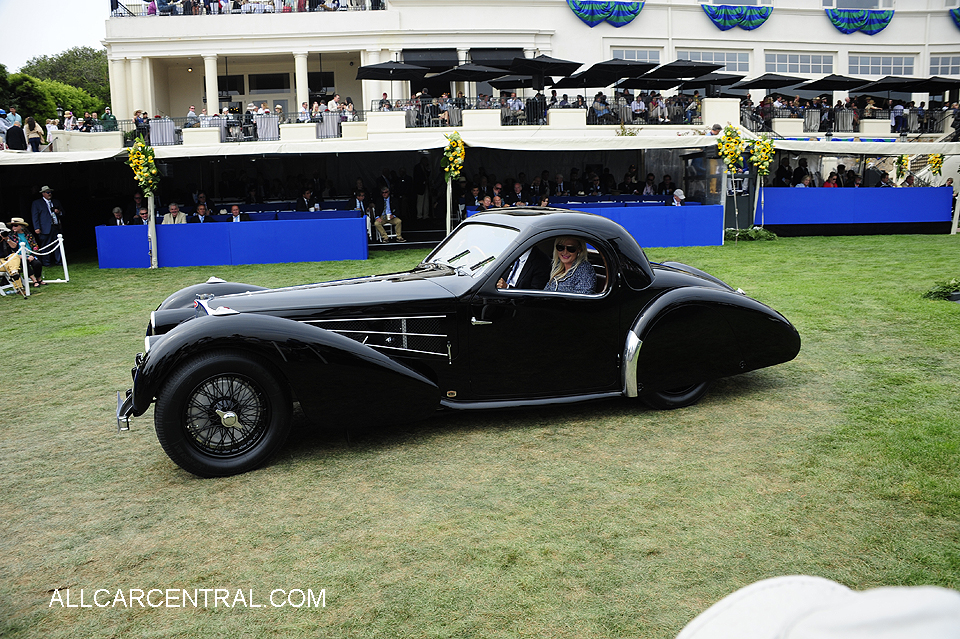
Bugatti Type 57S Gangloff Coupe sn-57532 1937
All Cars • • Racing • • VINTAGE • • Shows • • Gallerys • • Contact
